Milk Drop Crown
Harold Edgerton was determined to make history, and he certainly did. In 1957, he designed a revolutionary camera that captured the exact moment a drop of milk made contact on a rigid surface, resulting in a coronet of milk.
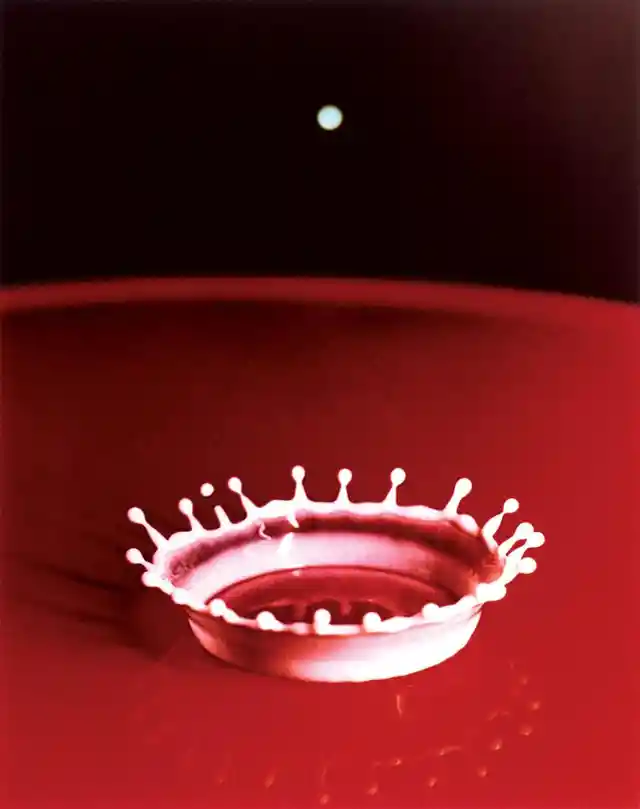
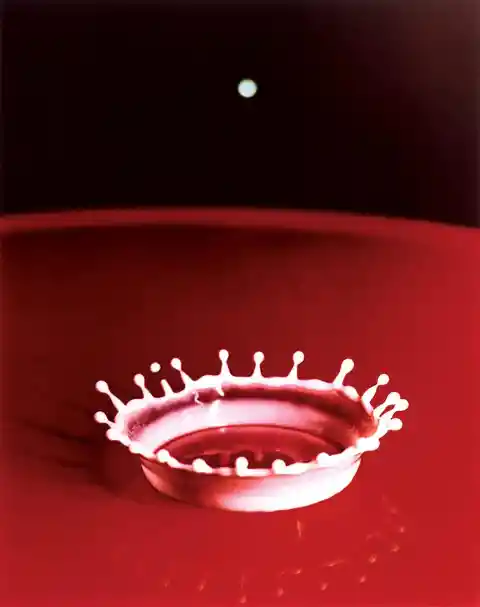
Harold was able to photograph a millisecond moment that was impossible to perceive unless captured by using high-tech equipment. We can say that stop-motion photography traces back to the 1950s. In fact, Harold’s first shots were in black and white.
First Cell Phone Picture
The title of this photo is pretty self-explanatory, but the first-ever cellphone picture has a great story behind it. Software entrepreneur Philippe Kahn built the prototype of a camera phone while his wife was in the hospital giving birth to their daughter.

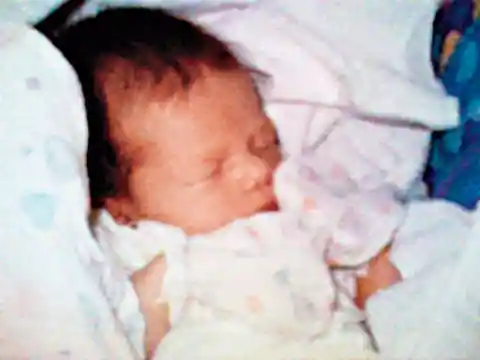
He connected a digital camera to his flip phone and managed to send a picture of his daughter’s birth to more than 2,000 people. This technology allowed the first-ever camera phone to be created.
The Stars Of The '80s
The more you stare at this picture, the weirder it looks. It seems like the strangest collection of people, doesn't it? But back when this picture was taken, it made perfect sense.

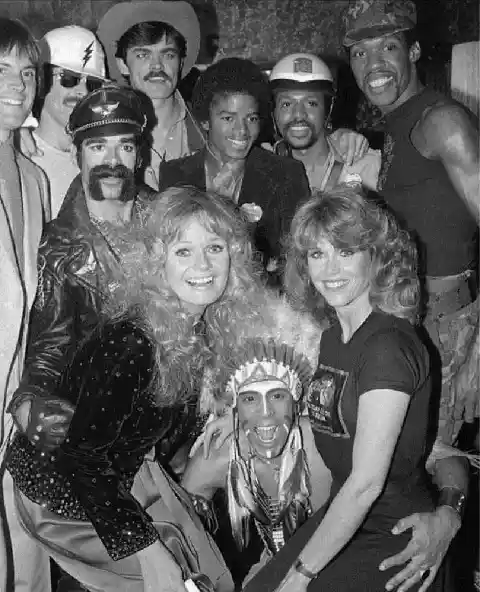
We can see The Village People posing with Michael Jackson, Jane Fonda, and Caitlyn Jenner, who at that time went by the name of Bruce Jenner.
Michael Jordan
This picture is the most famous silhouette photo of an athlete. Jacobus “Co” Rentmeester captured Michael Jordan with his most infamous dunk, flying in the air with his legs spread eagle.


The photo had such a great impact that Nike paid Rentmeester to make use of his idea. But the photographer later filed a claim against Nike for copyright infringement.
The Picture Hitler Wanted To Hide
Hitler was known as an excellent public speaker that was able to convince large masses of people of his insane ideas because of how powerful he sounded. To achieve this, he practiced his gestures a lot.


His personal photographer, Heinrich Hoffman, captured one of his rehearsals in this picture, which caused Hitler great embarrassment. He made sure this silly picture never saw the light of day, but after his death, it was finally discovered.
The Second Man On The Moon
People always talk about the first man on the moon, Neil Armstrong, but rarely mention the second man on the moon, who is as important as the first. Buzz Aldrin stepped foot on the moon on July 20, 1969.
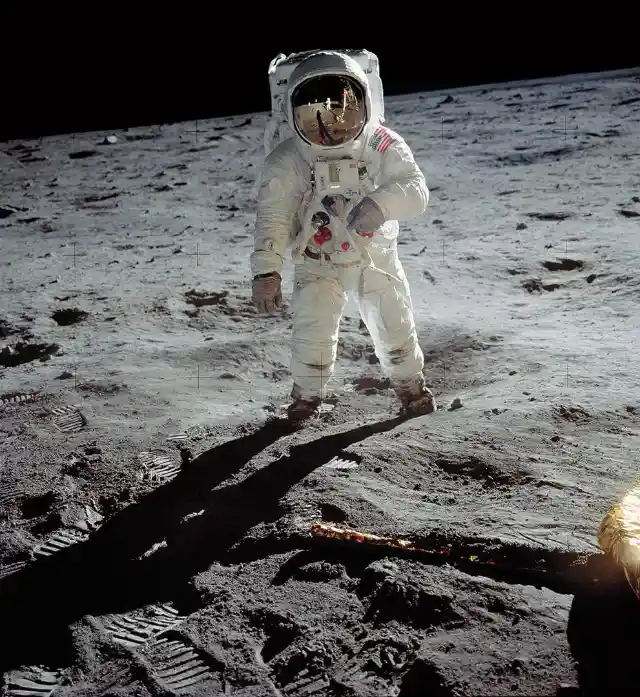
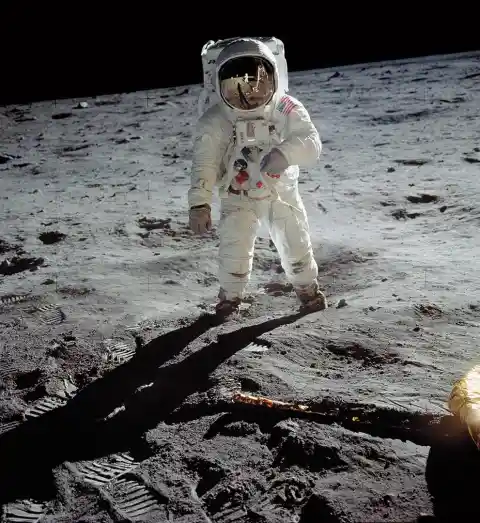
It was Armstrong who was holding the camera and photographed Buzz Aldrin. The picture doesn’t show the astronaut in action, but rather a quiet and peaceful man standing in the middle of nowhere.
The Unnamed Cowboy
This picture may look familiar to you, and that’s probably because this is a photo of the famous Malboro Man. The image of this unnamed cowboy was used by the cigarette manufacturer for decades.
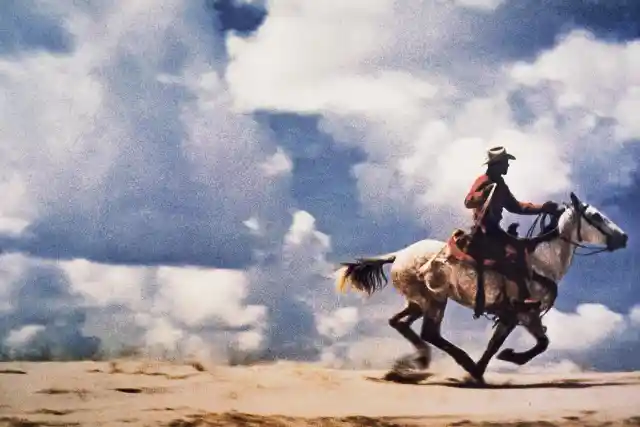
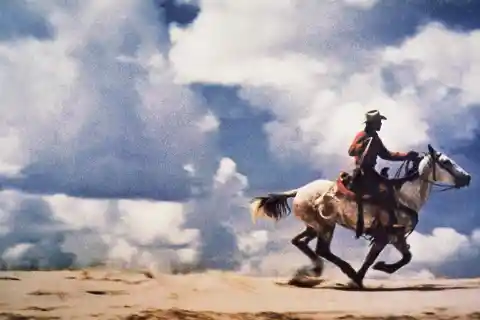
Photographer Richard Prince actually cropped the Malboro logo out of the picture and resold it even though he hadn’t taken the picture. This sparked a controversy that turned this photo into one of the most famous pictures in history.
Fire Escape Collapse
Stanley Forman was a photographer who worked for the Boston Herald American and was asked to cover the fire of a Marlborough Street building. It seemed to be a common rescue for firefighters until the fire escape cracked.
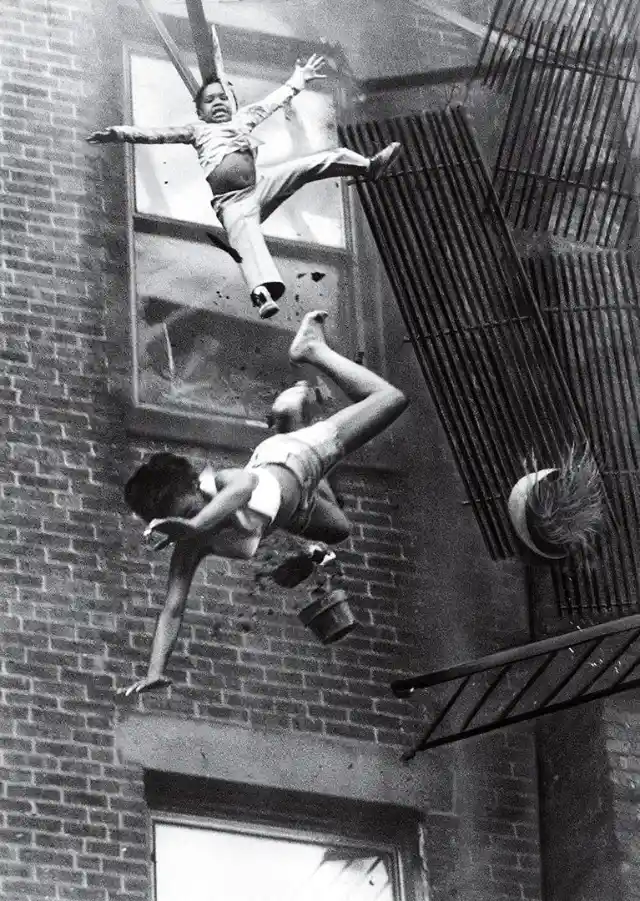
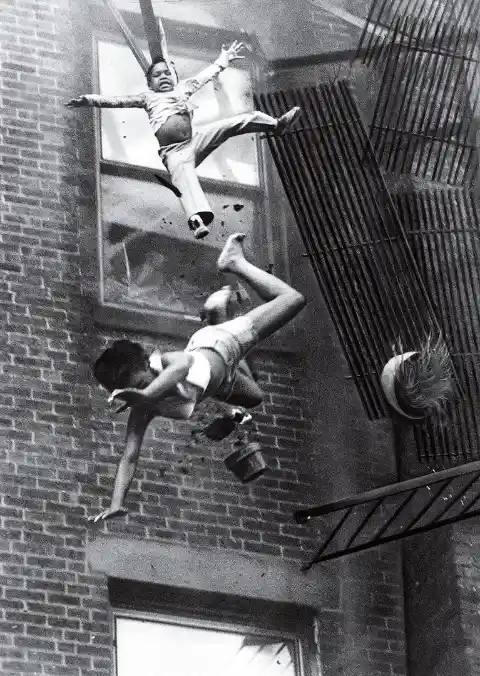
Suddenly, a woman and her daughter were falling from a fifth-floor fire escape and hitting the ground. The woman didn’t make it, but the child survived. Forman captured the moment both of them were flying in the air.
The Truth Behind 'Bewitched'
Bewitched was one of the most popular TV shows in the 1960s, but its star, Elizabeth Montgomery, didn't really enjoy its popularity.
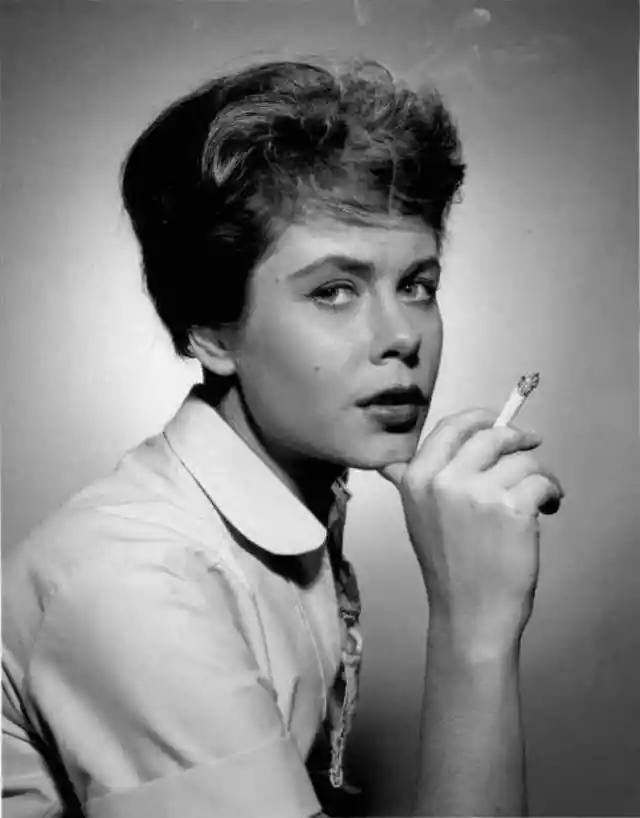
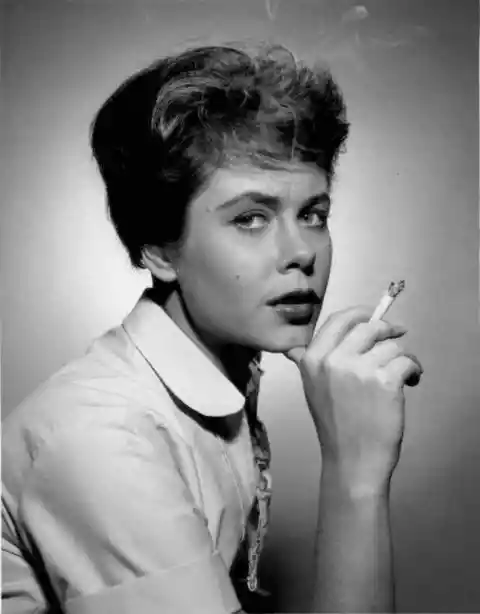
She felt trapped by her role and had a hard time finding work after it ended. When the show came to an end, she felt free, but she also fell into obscurity.
Black Power Protest
Tommie Smith and John Carlos were two African Americans who left a powerful message at the 1968 Olympic Games in Mexico City. When they took the medal stand, the athletes bowed their heads and raised their fists.
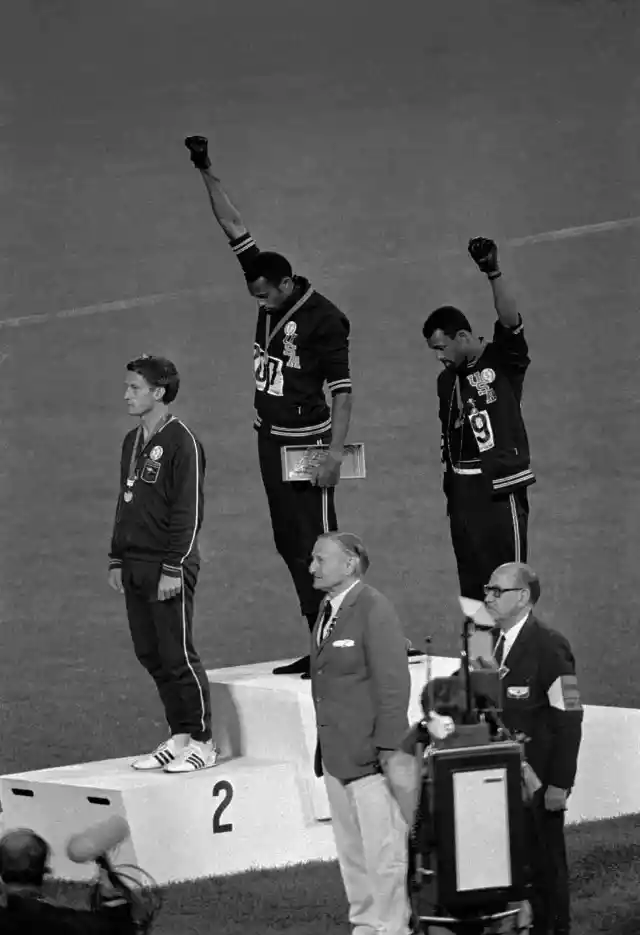
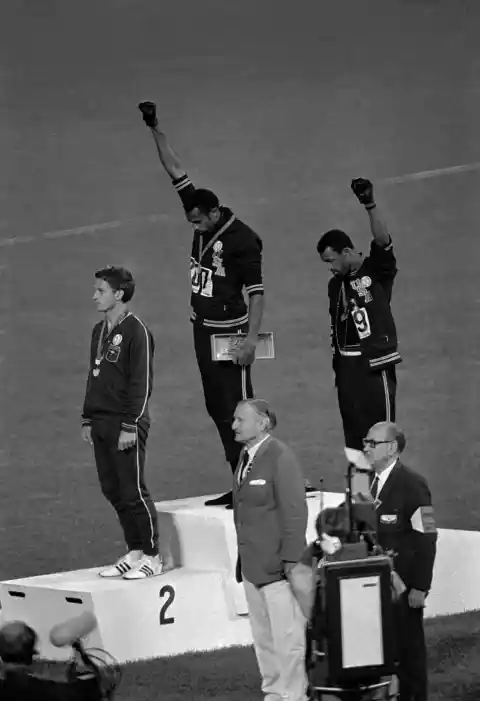
John Dominis captured the moment the message is given. Take a close look at the picture. Smith is not wearing any shoes as a sign of black poverty. The picture quickly became a symbol in the 60s.
The Face Of AIDS
During the AIDS crisis, there was a lot of misinformation about the disease, which dehumanized those suffering from it. Those who carried the virus were ostracized, and it took a long time for people to understand how the virus actually worked.


This picture, taken by Theresa Frare, helped humanize the victims of this horrific disease, as it captured a man on his deathbed surrounded by his heartbroken relatives.
Up In Flames
Photographer Malcolm Browne was told about a movement to protest against President Ngo Dinh Diem's regime. Sadly, Buddhists were the President’s enemy and target. What Browne didn’t foresee was a sacrifice of this magnitude.
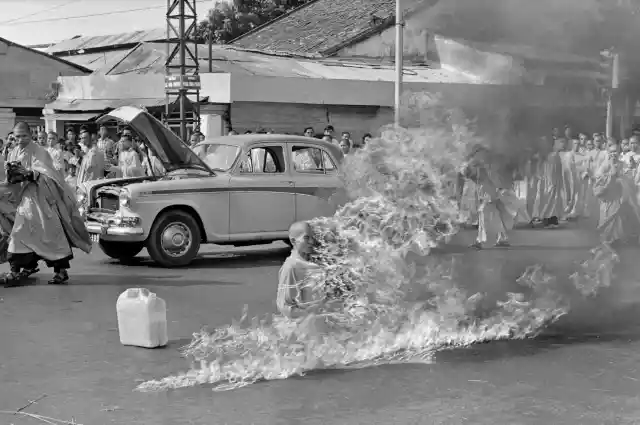

Browne captured the moment Thich Quang Duc sacrificed his life. The man peacefully sat on the floor while being doused in gasoline and later burned to death.
JFK's Illnesses
Everyone knows that John F. Kennedy was publicly assassinated in 1963 at the age of 49. What most people don't know, however, is that he lived in pain every single day of his life.
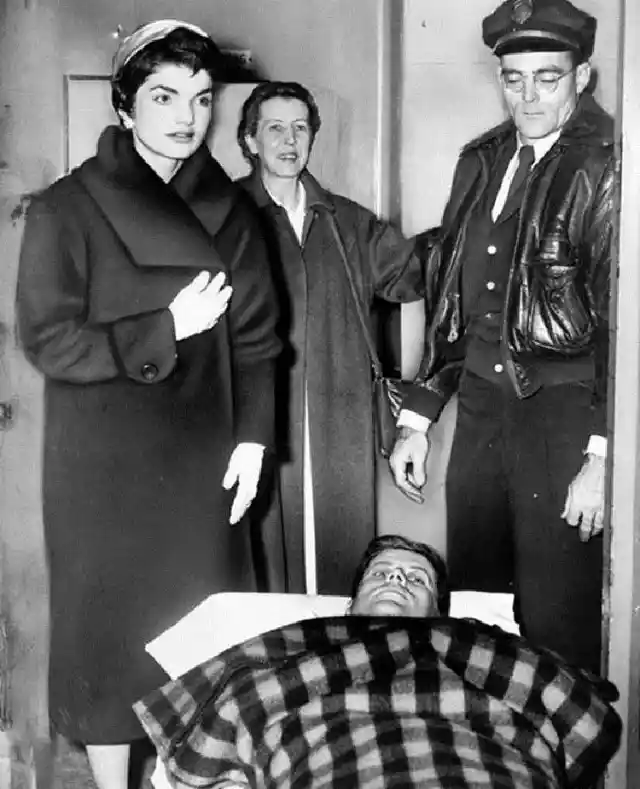
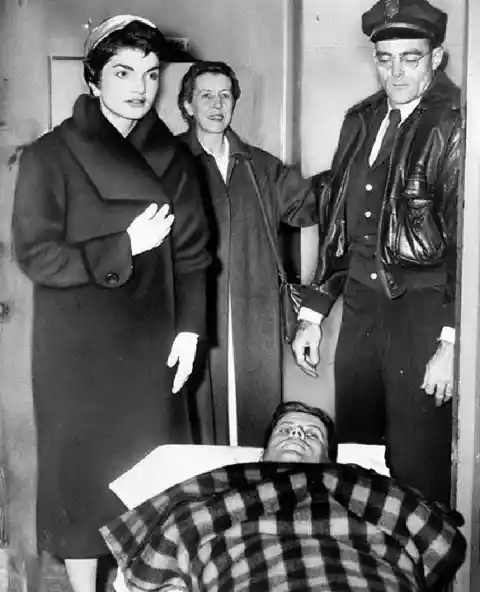
Up until his death, JFK suffered from chronic back pain, dizziness, fatigue, nausea, and more conditions, which he managed to hide from the public. He also had leukemia when he was a child. When in public, he pretended to be in top shape and always had a smile on his face.
18-Week Fetus
Back in 1965, nobody knew what a fetus looked like. Lennart Nilsson’s work introduced the world to the development of a fetus. These fetuses were aborted for medical reasons, so Nilsson photographed them once they were out of the womb.

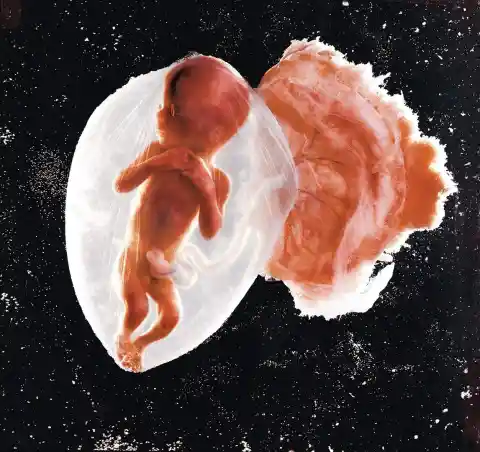
Nilsson was given the green light to photograph fetuses at the Stockholm Hospital. He prepared the setting so it would look like the fetuses were still in the womb.
War In Bosnia
The Bosnian War took place in Bosnia and Herzegovina between 1992 and 1995. This devastating series of events didn’t catch the attention of international media until one brave photographer named Ron Haviv captured the true horror of the war.
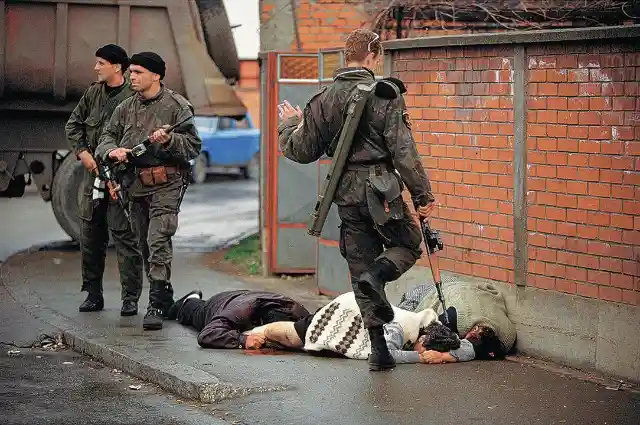
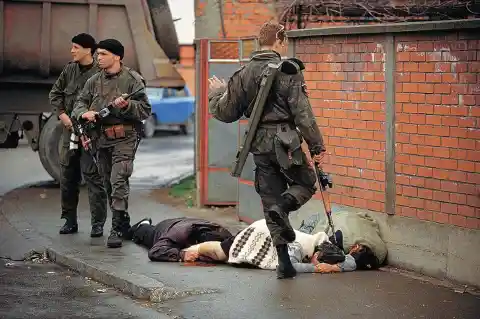
The picture shows a Serb kicking a Muslim woman in the head after she was shot. Once the war was over, this photo was used as evidence against the leader of the militia and helped convict him for his crimes.
Undercover Bunny
The feminist movement reached a peak in the 1960s and 70s, and had Gloria Steinem as one of its leaders and spokeswomen.


As part of her activism, she actually went undercover at the Playboy Club in NYC and became a Playboy Bunny to write an expose about how women were treated.
Vulture Waiting For A Meal
This photo of a toddler who collapsed on the ground on his way to a feeding center in Sudan shook the entire world. Taken in 1993 by Kevin Carter, it shows the real horror of what famine does to people.


The most harrowing part is the vulture waiting for the child to die. The picture also sparked controversy because people believed Carter was wrong for taking a photo instead of aiding the child. The question of whether a photographer or a journalist should intervene or not is still debated today.
Famine in Somalia
This photograph shows a starving Somali woman waiting to be taken to a feeding center in a wheelbarrow. This one, along with many other pictures, was taken by photographer James Nachtwey in 1992.

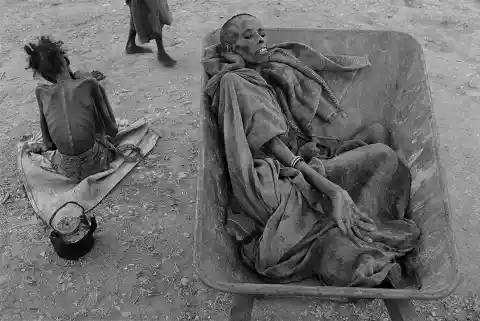
Thanks to these photographs, more international attention was drawn to the humanitarian crisis in Somalia, and things finally started to change.
JFK Assassination, Frame 313
Abraham Zapruders was an amateur photographer who captured the death of John Fitzgerald Kennedy with his 8-millimeter camera. The film later led to loads of conspiracy theories about this tragic event.
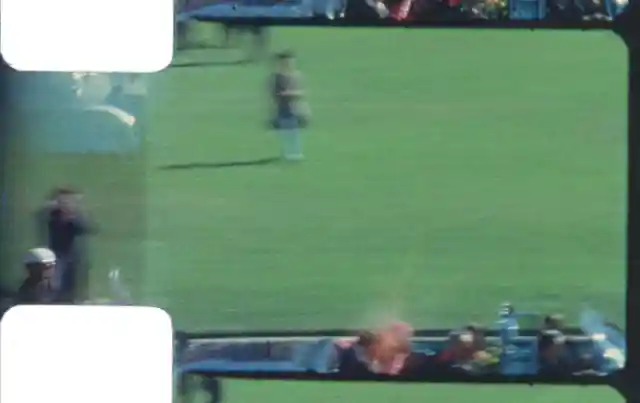
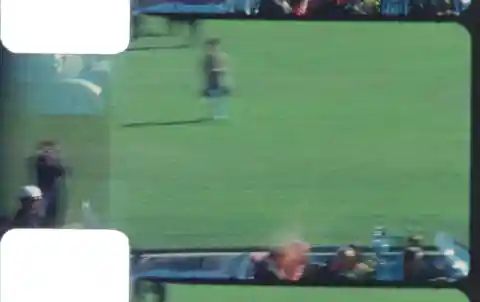
Zapruder was right in front of the President’s car when he was shot. Over 400 frames captured the moment, but frame No. 313 was crucial: it depicts the exact moment the bullet hit Kennedy’s head.
Lenin's Last Picture
Vladimir Lenin was one of the faces of the Russian Revolution and is considered a communist hero in his home country. He died in 1924, and his death is still a sort of mystery.
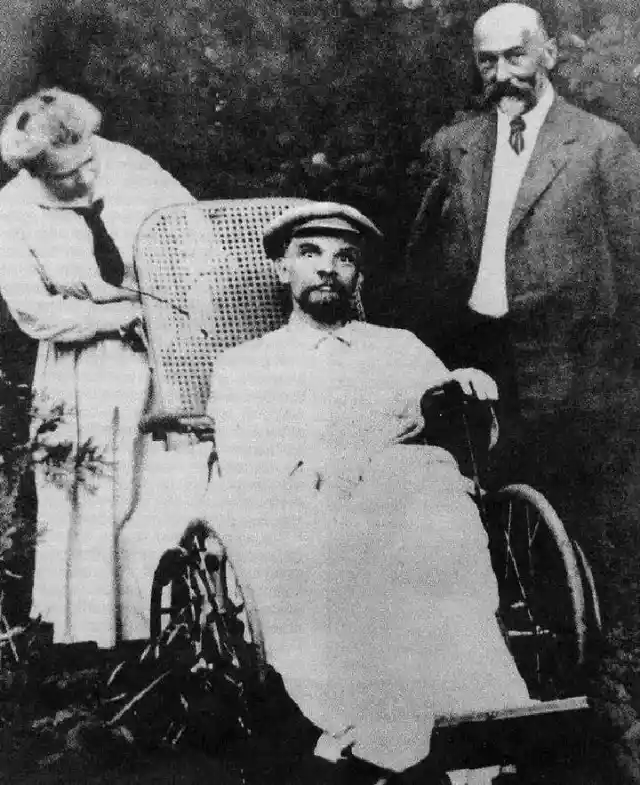
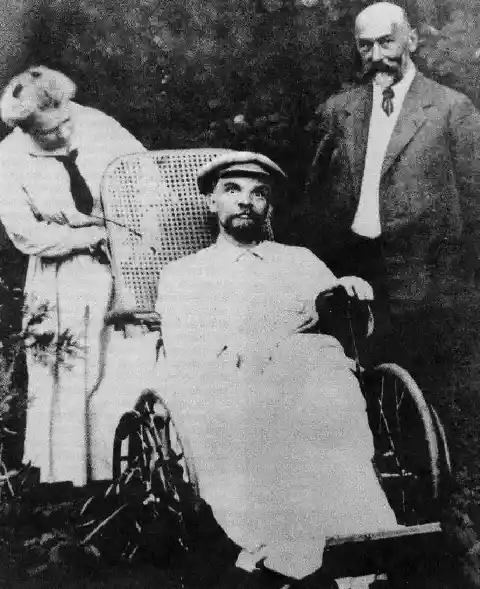
He suffered multiple debilitating strokes over the years. This is the last picture of him ever taken, when he was already unable to walk and speak. Shortly after, he had one last stroke that took his life. What caused these strokes is unknown.
Brian Ridley and Lyle Heeter
There was a time when homosexuality was banned, or even considered a crime. Robert Mapplethorpe dedicated ten years of his career photographing the situation of gays between 1970 and 1980.
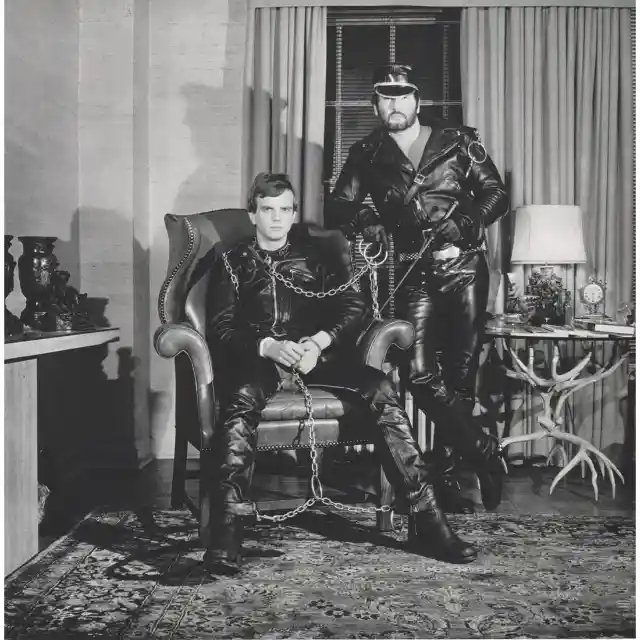
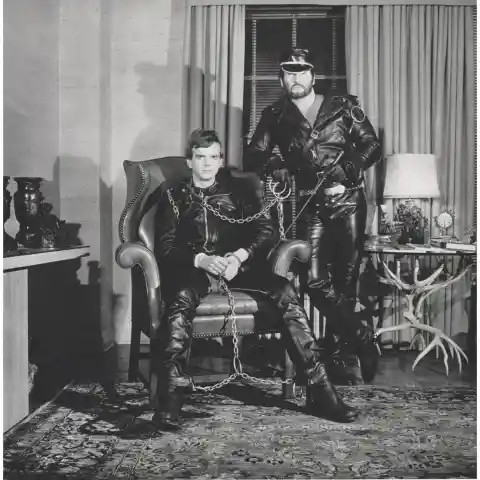
Brian Ridley and Lyle Heeter are standing in a normal living room, both dressed up in leather, one of them using chains and the other one holding them. Mapplethorpe was the first photographer to introduce the world of gays and sexuality.
Caroline Munro
Caroline Munro was a star in the 1970s. She appeared in movies like Dracula and Captain Kronos, in which she wore very revealing clothes.

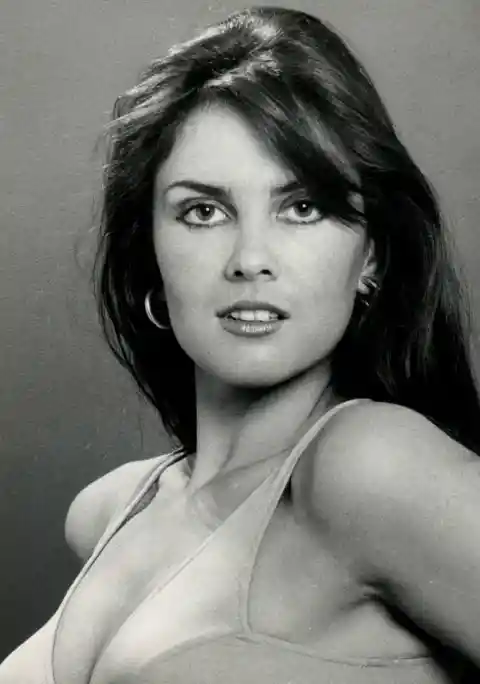
The truth is that the media was obsessed with her voluptuous curves, which really annoyed her. She was offered to pose nude numerous times and she always refused. Not only that, but paparazzi always tried to get pictures of her cleavage, which was extremely disrespectful.
Look At What You've Done
Once World War II ended, the Allies thought it would be a good idea to show Nazi prisoners of war what they had done.
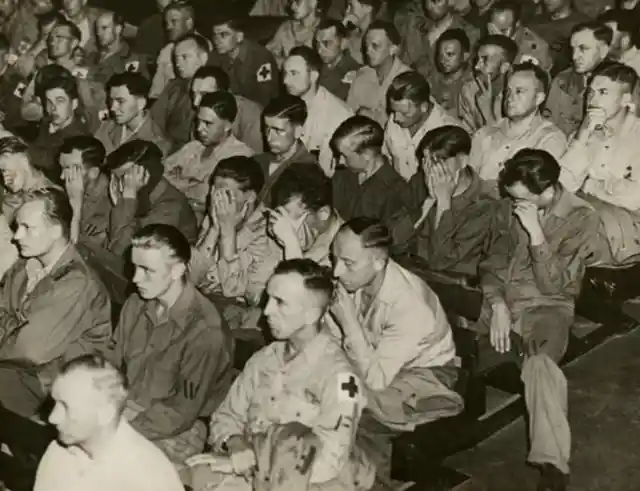
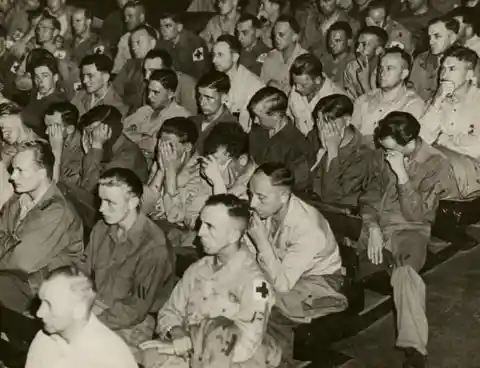
They made all of them watch films about concentration camps and the horrors that they put people through not only to spite them, but also to make them feel remorse. This helped many of them accept the horror of their ways.
Lady Di's Last Picture
Lady Diana was relentlessly stalked by the paparazzi every single day of her life. It is believed that this is what partially caused her tragic death in 1997.


This picture was taken by one of the paparazzi that was following her car that fateful day. The driver, Henri Paul, was going at an unbelievable speed, which made him lose control of the car and crash into a wall. While it is believed that the driver was speeding to avoid the paparazzi, an illegal amount of drugs and alcohol was found in his system.
Betty Grable
Actress Betty Grable unintentionally became one of the first pinups to inspire American soldiers while they were fighting in World War II. A 20th Century Fox photographer took this photo of Grabel, and the rest was history.


The studio sent this picture abroad, and troops were requesting around 50,000 copies every month. Her picture was everywhere, and it helped thousands of soldiers to get through the war.
Autistic Children Treatment
This image is really hard to look at, but this wasn't uncommon a few decades ago. You might be surprised to learn that this picture was taken in 1982.
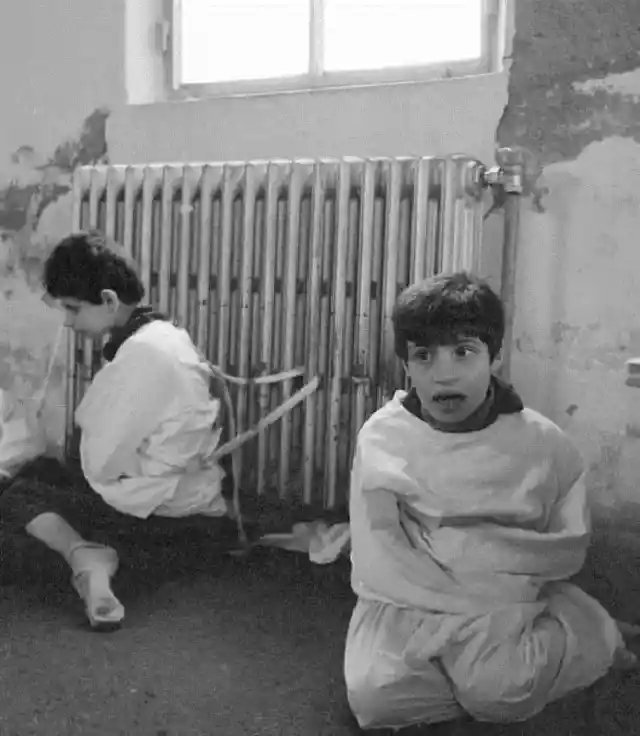
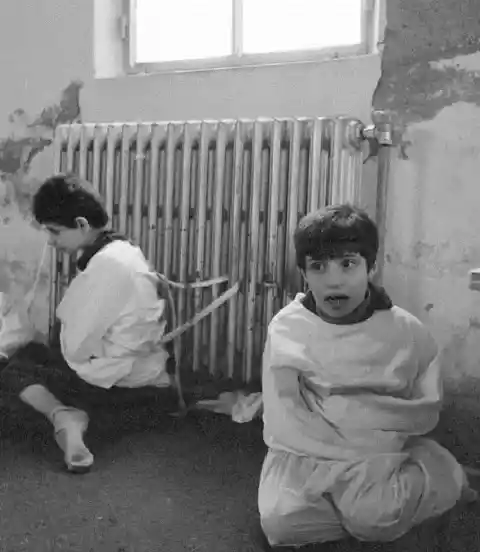
Autism is a condition that we are still learning about, and only a few years ago, autistic children were just tied up and made to wear straitjackets instead of being cared for.
The Sexy Stewardess Outfit
Since the infancy of aviation, stewardesses were expected to be the embodiment of men's dreams. They had to wear makeup, heels, and skirts and were always supposed to smile.
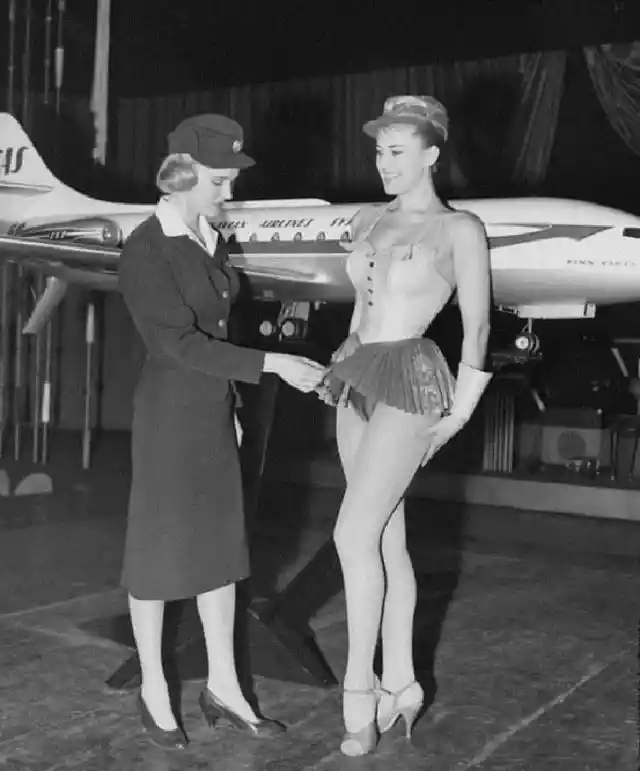
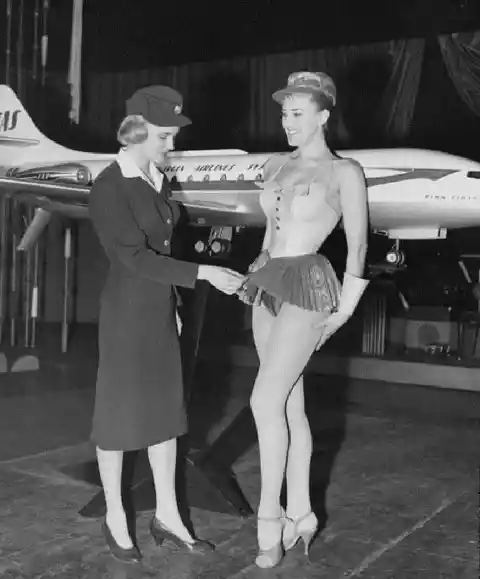
In this picture, we can see a Scandinavian stewardess examining a new uniform proposal in 1958 and, unsurprisingly, she was not amused. Luckily, enough women complained and this outfit was never approved.
Muhammad Ali vs. Sonny Liston
Neil Leifer captured a unique moment in the industry of boxing, which later became a picture that the world will never forget. Leifer admitted in an interview that he was lucky to have the right seat, but most importantly, he was lucky to take the right photo at the right time.
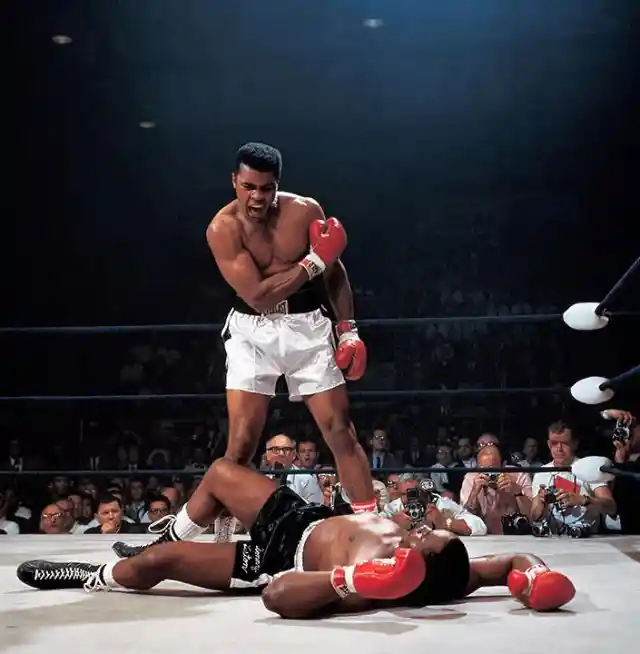

The photo captures the moment Muhammad Ali taunts his opponent after knocking him down in the first round. Leifer’s work became widely known, as Ali was the nation’s favorite athlete.
Real-Life Mermaids
All myths and legends have some kind of truth to them, but it's never what we would expect. For centuries, people claimed to have seen beautiful mermaids in the middle of the ocean, but no evidence of their existence was ever found.
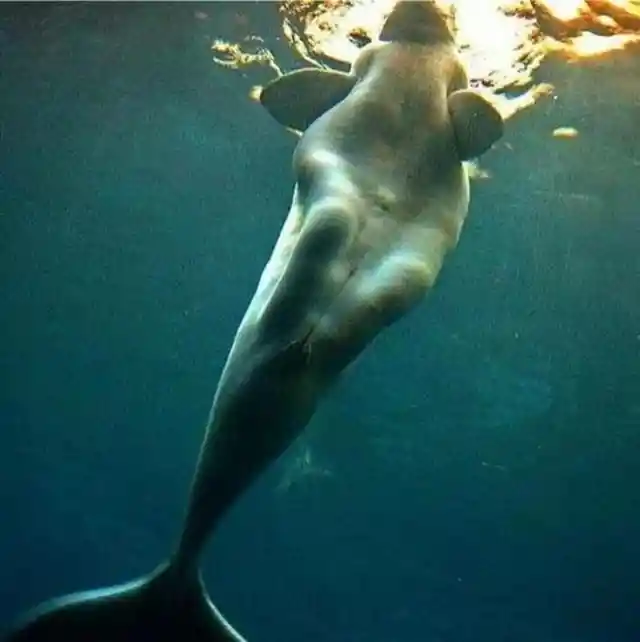
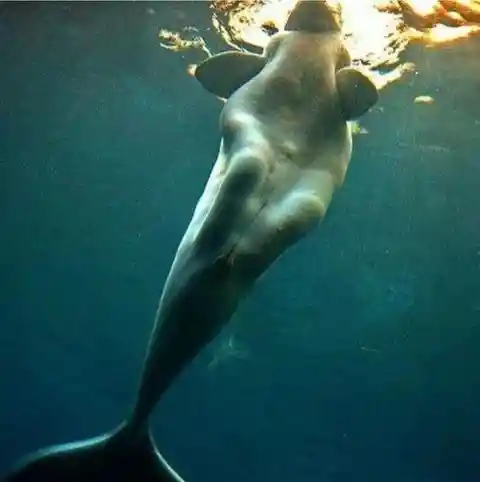
That is because what people saw were most likely Beluga whales or manatees, two species that seem to resemble the human figure. People who were starved, dehydrated and confused at sea would spot them and think they were mermaids.
The Good Soldier
On the night of August 12, 1961, Berlin was separated into East and West Berlin, and whatever side someone was on that night, that's the side they were supposed to stay in.
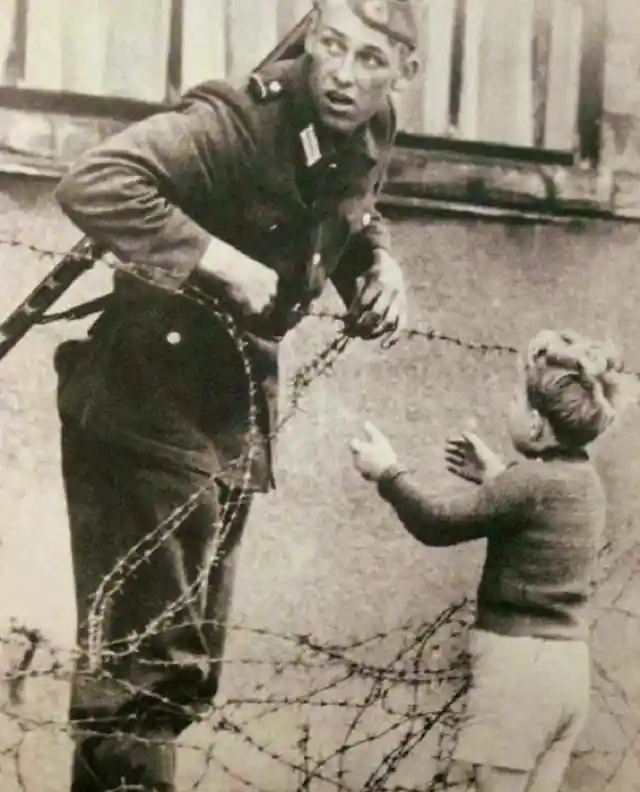
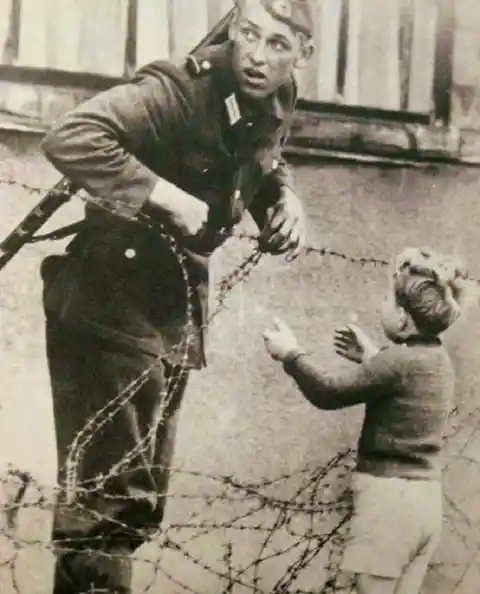
Anyone who dared cross the border would be shot. This picture captured a German soldier disobeying orders and helping a child cross over to the other side to be with his family. We don't know if the soldier survived this, but we hope he did.
Ian Curtis' Last Picture
Ian Curtis was the vocalist of Joy Division. He recorded two super successful albums with the band and seemed to have a bright future ahead of him.
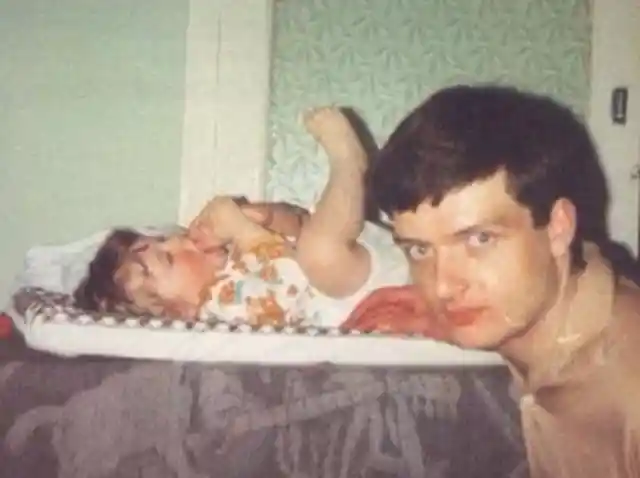
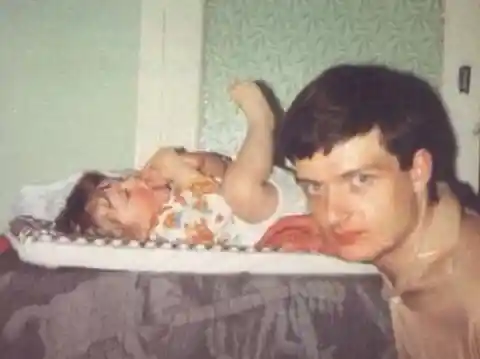
He also had a baby daughter and a wife. At age 24, however, he tragically committed suicide. This was the last photo ever taken of him, and you can see him posing next to his baby.
Oscars Selfie
The famous Oscars Selfie was a spontaneous photo taken by Bradley Cooper at the 2014 Oscars, hosted by Ellen Degeneres. The picture featured some of the biggest Hollywood stars at the time.


Degeneres immediately uploaded it to Twitter after it was taken, and the photo was retweeted over 3 million times, making it the most retweeted picture in history.
An Unlikely Couple
When Burt Reynolds and Sally Field began dating, people were surprised because of how different they seemed. The couple, however, quickly proved everyone wrong.
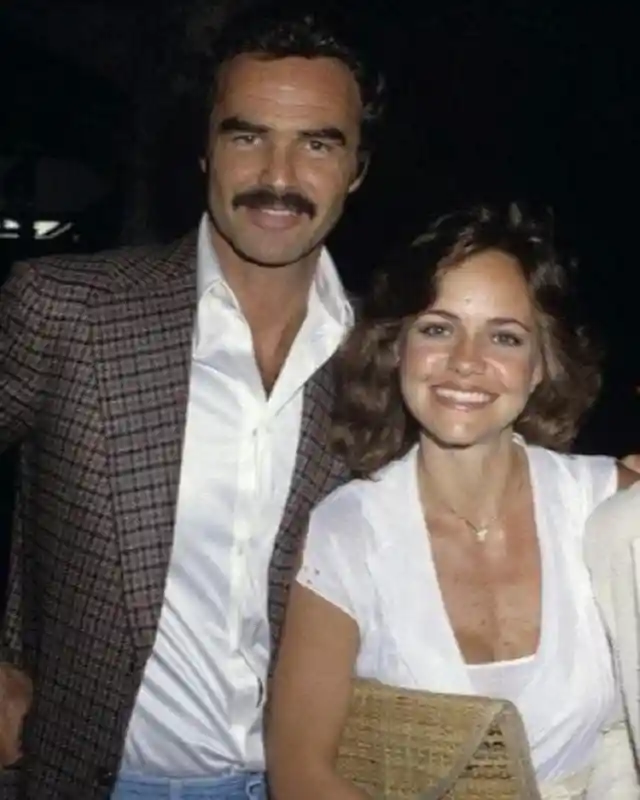
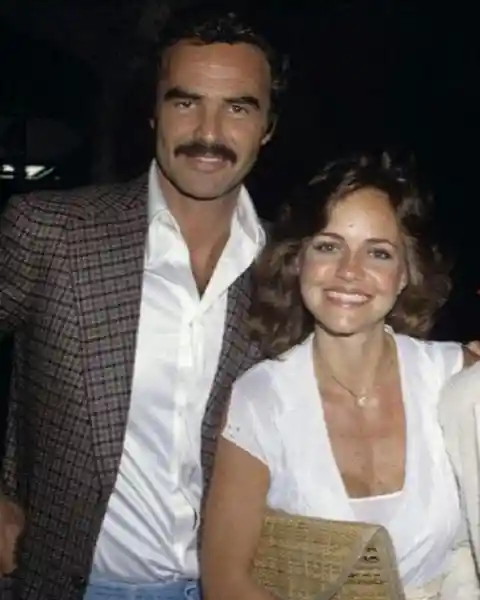
The two were madly in love with each other and were together from 1976 to 1980. Decades after their breakup, Reynolds still claimed Field was the love of his life and always regretted not being able to make it work.
Saigon Riot And Execution
On February 1, 1968, the streets of Saigon were nothing but chaos and violence. Photographer Eddie Adams was capturing those moments of disturbance when he stopped to take a good picture.
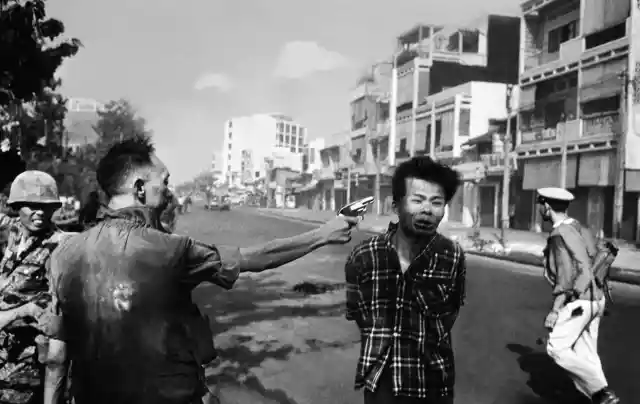
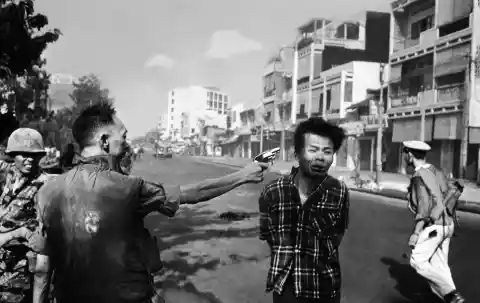
Adams thought he was photographing a suspect being questioned. But it was quite the opposite. He captured the exact moment the Chief of the National Police shot the prisoner in the head. His name was Nguyen Van Lem, and he was the leader of a terrorist group.
Clown For Life
This may look like an ordinary picture of circus performers, but it isn't. The man on the right is Otto Griebling, one of the only four people to be considered Master Clowns.
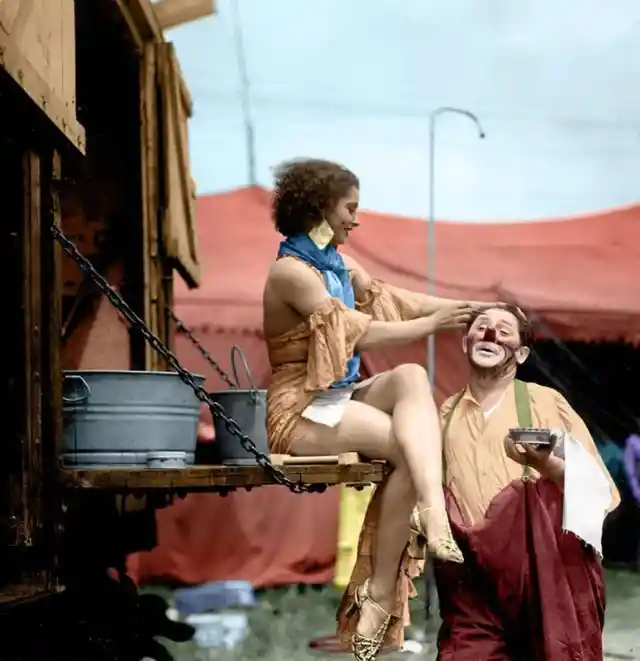
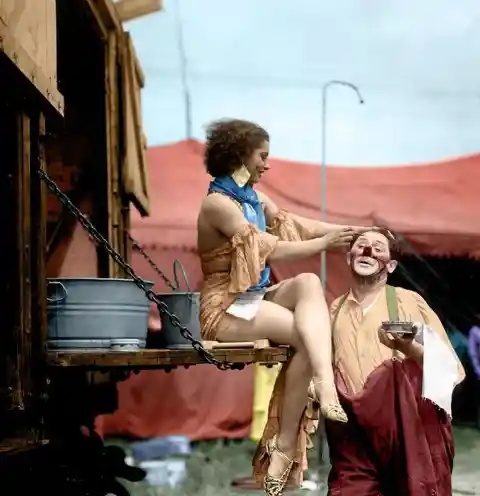
His entire life revolved around being a clown and perfecting his art. He moved from Germany to America to pursue his dream and performed as a clown every day for the rest of his life.
The First Hulk
We all know Mark Ruffalo as The Incredible Hulk, but it is also known that he wasn't the first person to bring this superhero to life.


The first Hulk was played by two actors: Bill Bixby, who played Bruce Banner, the scientist who then transforms into the green monster, and Lou Ferigno, who played the actual Hulk.
The Earth Coming Up
The Apollo 8 mission allowed astronauts Frank Borman, William Anders and James Lovell to appreciate how perfect our world is. The picture was taken on Christmas Eve, a beautiful gift after a year full of chaos for the American people.


Borman, Anders and Lovell were the first crew ever to successfully orbit the Moon. The photo was taken while the spacecraft was entering the fourth orbit. It is the first color picture of the world taken from space.
Elvis And His Parents
Before he became a superstar, Elvis Presley was a shy boy who was picked on by the kids at his school and spent most of his time with his parents.
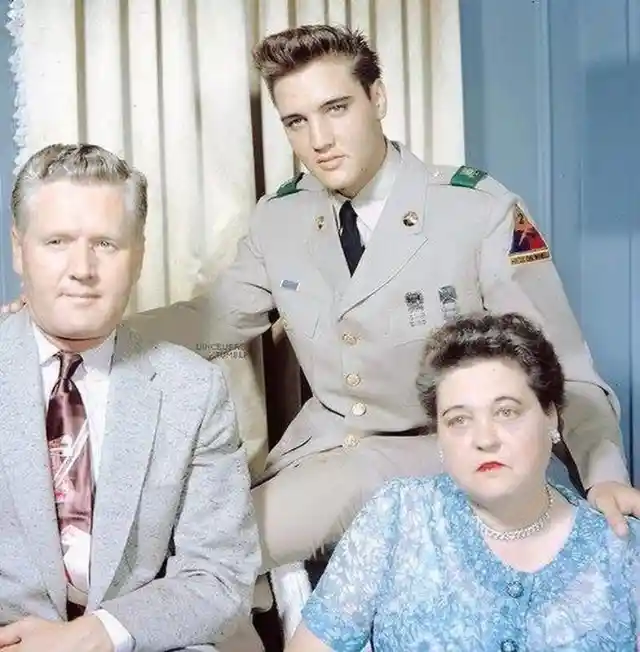
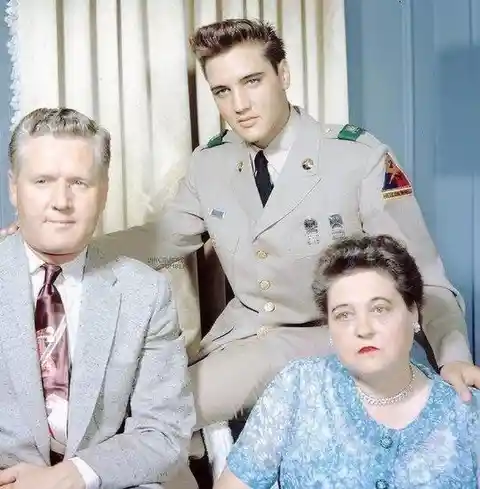
He was extremely close with them and loved them very much. Sadly, Elvis' mom passed away shortly after he became famous and he never quite got over it. Elvis said: I don't know why she had to go so young. But it made me think about death. I don't feel I'll live a long life. That's why I have to get what I can from every day.
From Actress To Princess
The most famous actress-turned-princess was definitely the lovely Grace Kelly, but she wasn't the only one who took that path in life. Actress Jocelyn Lane also married a prince.

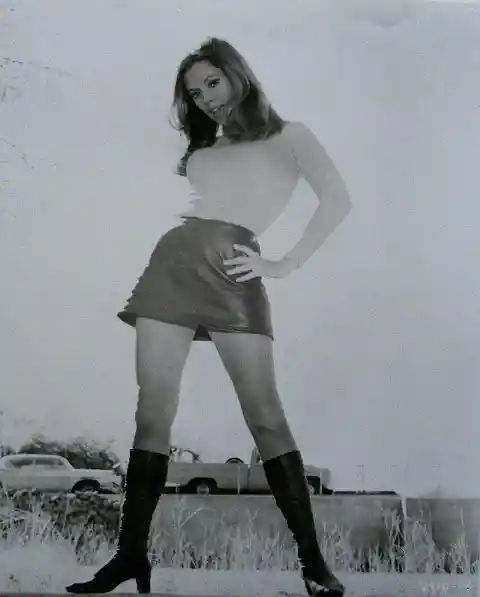
She traded her blossoming career in show business to marry Prince Alfonso of Hohenlohe-Langenburg, a Spanish prince, in 1971. Sadly, it didn't work out and they divorced in 1985. She later admitted she regretted quitting her career.
Alfred Hitchcock & The MGM Lion
Alfred Hitchcock was known for his eccentricity, but people didn't expect to ever see him serving tea to a lion. This amazing picture was taken in 1957 and was a PR strategy for production company MGM.
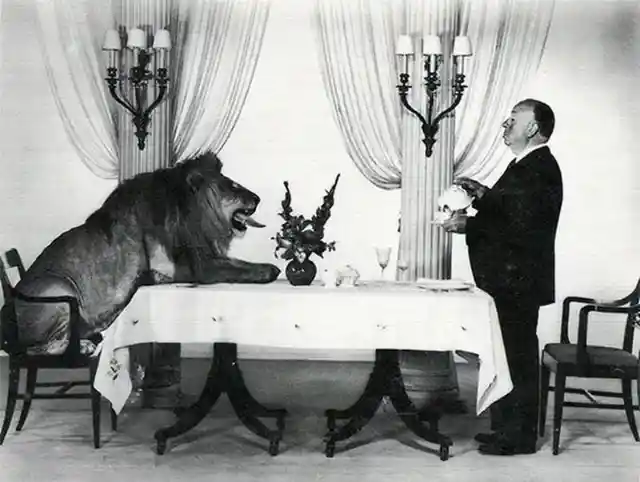
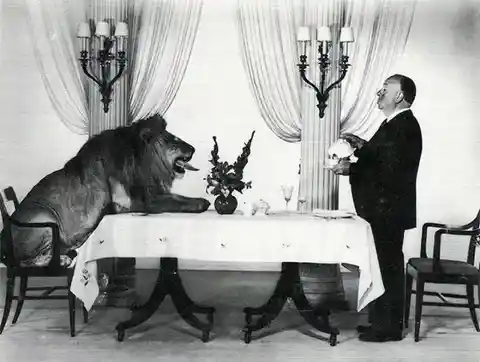
As you know, MGM is best known for having a roaring lion as its logo. The lion in this picture was the actual MGM lion, Leo, who you can still see at the beginning of MGM movies.
Hippos In The Sea
If you know anything about hippos, then you’d probably find it strange to see them in the ocean. Hippos love water, but their habitat is usually an inland river or a swamp.
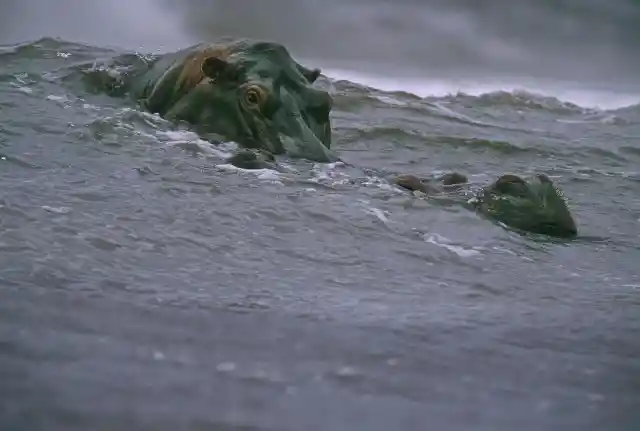
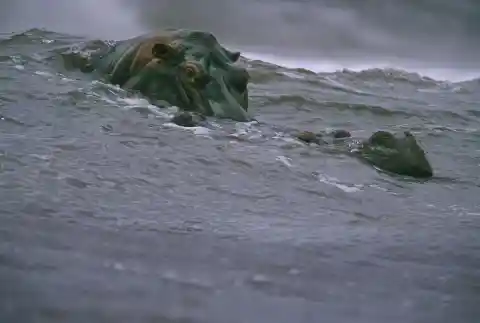
This picture shows how wildlife has been evicted from their natural habitat and forced to adapt to other environments due to human activity.
The First Lady
Back in the 1970s, everyone was obsessed with Jacqueline Kennedy Onassis. Her “private life” wasn’t private at all, as paparazzi would always stalk her. One of the obsessed photographers was Ron Galella.
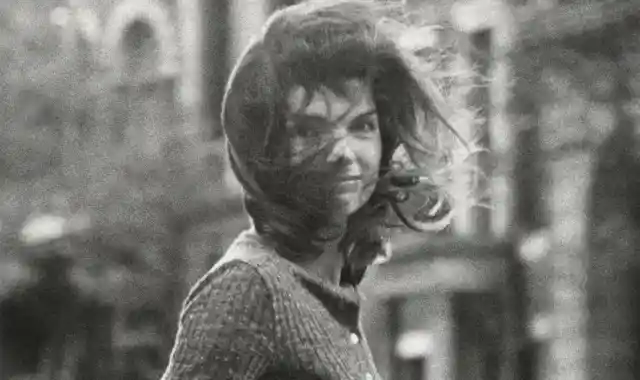
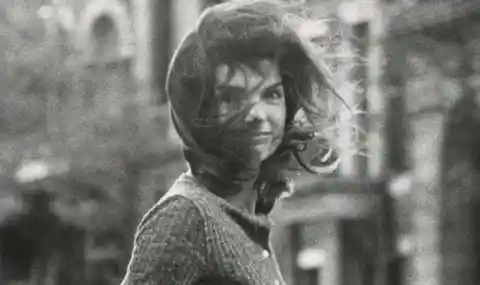
Galella was blinded by Jackie’s perfection, to the point where he once got in a taxi to follow the First Lady. Eventually, he got the perfect shot: a picture of Jackie looking over her shoulder right to the camera, with her hair blown by the wind.
Marilyn's Secret Pregnancies
The legendary Marilyn Monroe had a life filled with very high highs and very low lows, which culminated in her untimely death in 1962 from a pill overdose.
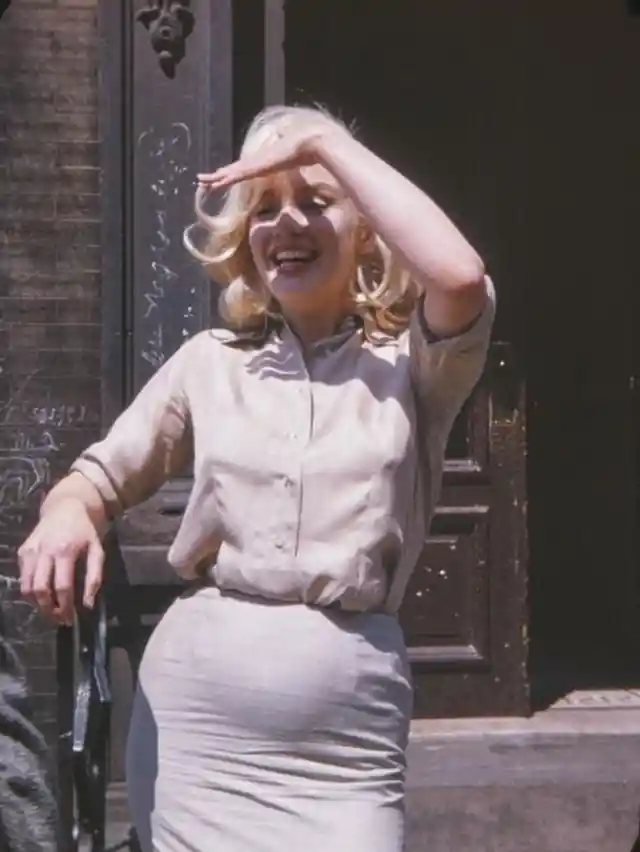

It is believed that she became pregnant on several occasions and suffered a miscarriage each time. She was, for example, believed to have been pregnant in this picture. Sadly, the truth will never be known.
Birmingham, Alabama
During segregation, authorities inflicting violence on African Americans was an everyday occurrence. Back in 1963, photographer Charles Moore was present at the protest of black Alabama residents.
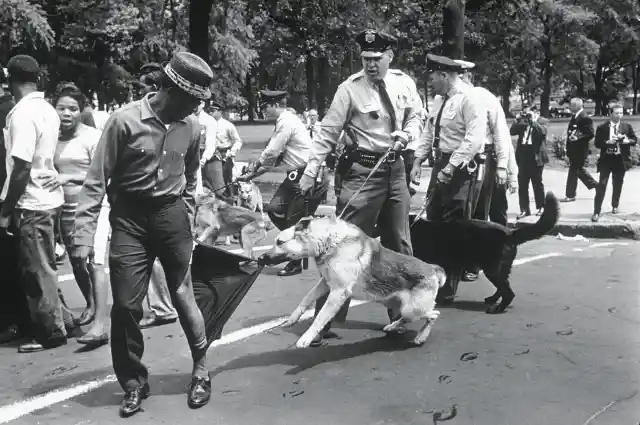
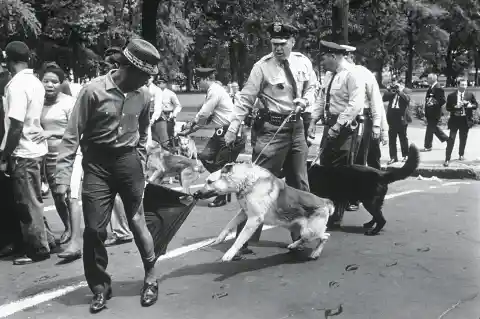
Moore was present at the civil rights movement protest in Birmingham. He captured one of the many inhuman moments in the protest: a police dog pulled and tore apart a black man’s pants. A year after the photo was taken, the Civil Rights Act of 1964 was passed.
Angela Lansbury Through The Years
Most people got to know Angela Lansbury when she starred as Jessica Fletcher in the hit TV show Murder, She Wrote. When the show premiered, she was 59.
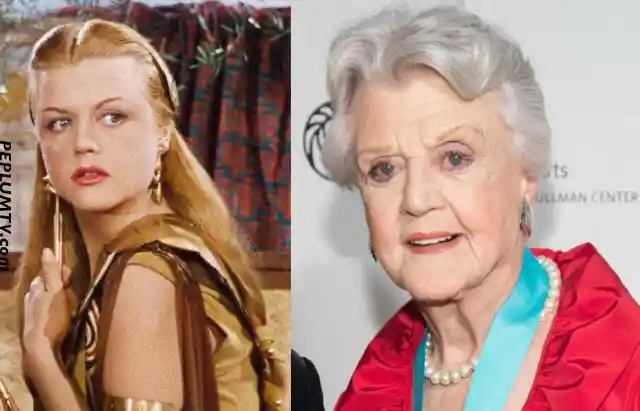
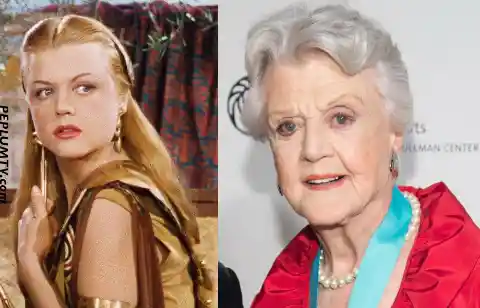
Most people don't know what she looked like in her youth, and that's because she didn't work in television before Murder. Before that, she was huge on Broadway.
Massacre At The Olympics
It was 1972, and the Germans were all excited for the upcoming Olympic Games, especially after such bad memories of Adolf Hitler’s 1936 Games. Until Black September, a terrorist group murdered two people.
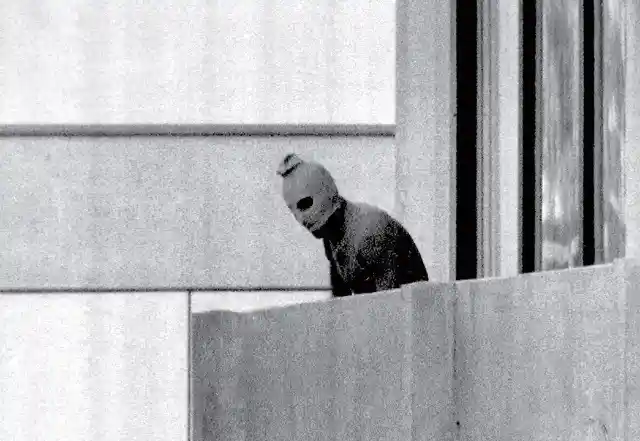
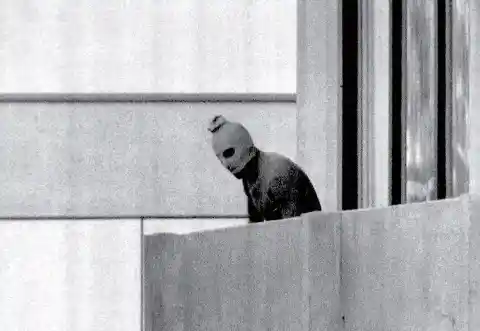
The Palestinian terrorist group wanted to have their fellow citizens released, so they killed two people and took nine as hostages. The photo of a terrorist on the balcony was taken by Kurt Strumpf. He captured the horror of that day.
A Mysterious Death
Natalie Wood was a gigantic star in Hollywood for many decades. She still had a very bright career ahead of her, but it was cut short when she died under mysterious circumstances in 1981.


She was on a boat with her husband, Robert Wagner, and fellow actor Christopher Walken, when she disappeared in the middle of the night. She was later found drowned, and both men gave conflicting statements about the last time they saw her alive. Nobody truly knows how she ended up in the water.
Soweto Riot
Soweto students were protesting against making the Afrikaans language mandatory in schools. The protest went violent when the police set off tear gas, and students started throwing stones.
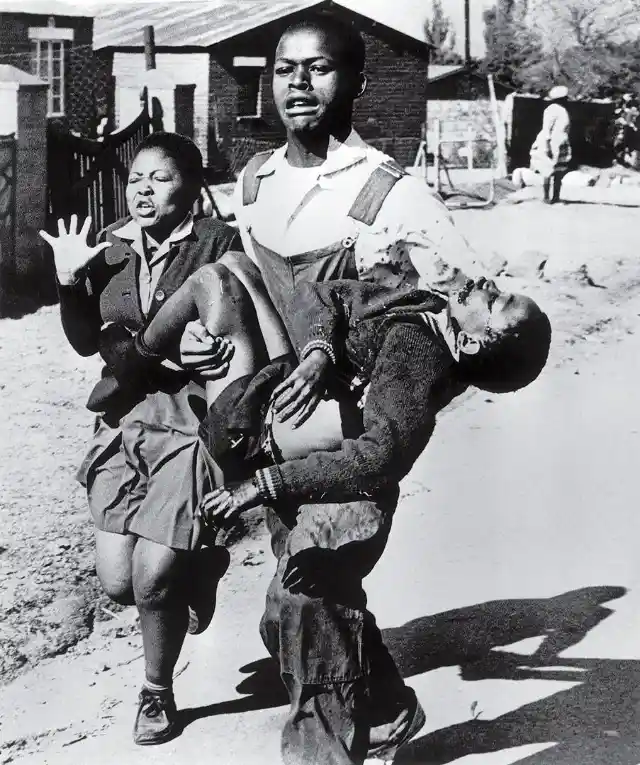
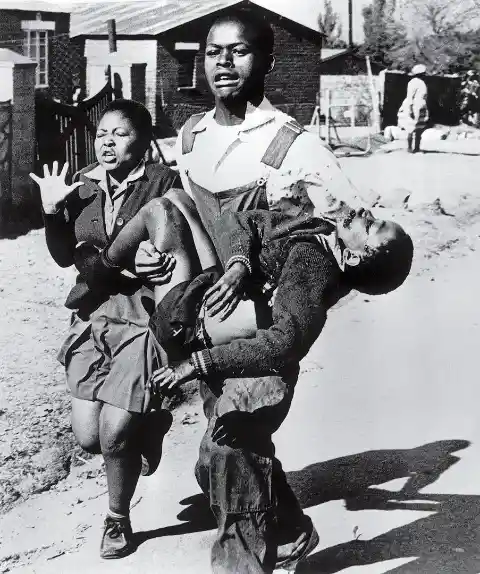
The police shot the crowd and hit a 13-year-old student. Sam Nzima was covering the riot and captured the moment the kid was killed and later lifted up by another student. Nzima got death threats after making the photo public.
99 Cent
This photograph, titled 99 Cent, shows the inside of a 99-cent store; pretty ordinary, right? Well, this was actually the most expensive contemporary photo ever sold. This was because of the story that it tells.


The photo resembles an impressionist painting, with the endless rows of items and shoppers’ heads floating above the shelves. It made people question the impact of consumerism in society.
Untitled Film Still #21
Cindy Sherman was an artist both in front and behind the camera. She is a photographer and filmmaker who became well-known by the end of the 70s for portraying herself.


Untitled Film Still is her most famous work, which includes more than seventy black and white photographs that became of great value to the artistic community.
A Rebellious Woman
This amazing photo shows a young woman on the street aiming a gun. She was a volunteer of the Irish Republican Army in 1972, and her identity is unknown.

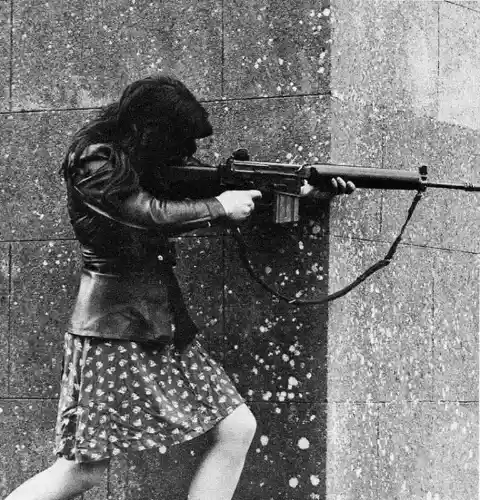
This picture is particularly interesting because only men were allowed to fight during The Troubles, a bloody civil war in Northern Ireland.
Last Picture Of A Samurai
The Samurai were legendary warriors from Japan that were active until 1870. They were abolished by the Japanese government in order to create a military force that every citizen could join.
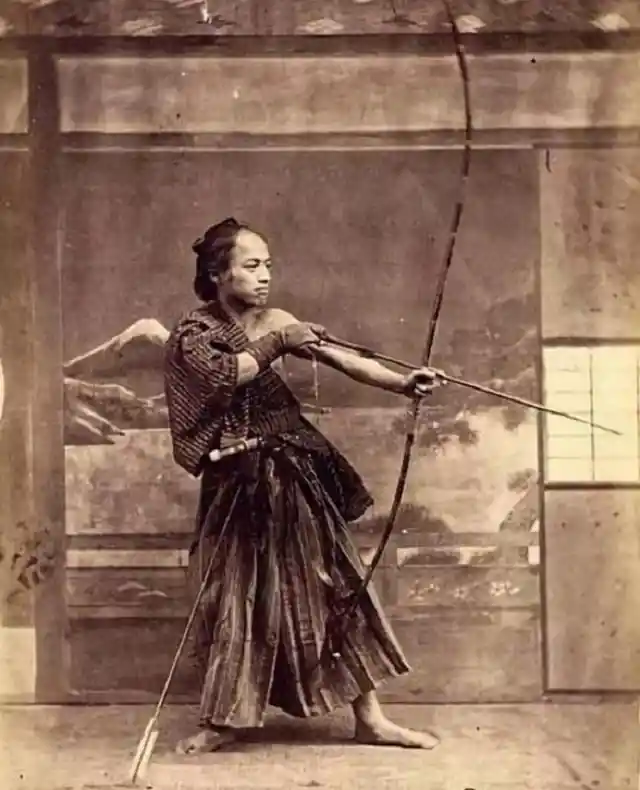

This picture shows a Samurai posing one last time in front of a camera with his bow before his group was eliminated.
A Harlem Debutante Ball
Debutante balls are surprisingly still around, though they are much more modernized nowadays. Back in the 1950s, it was very common for wealthy families to host these types of events.
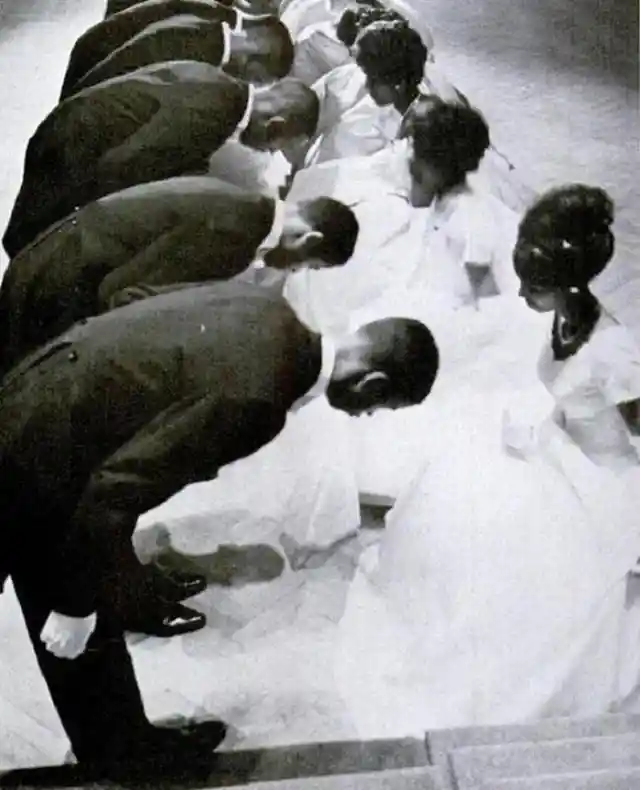
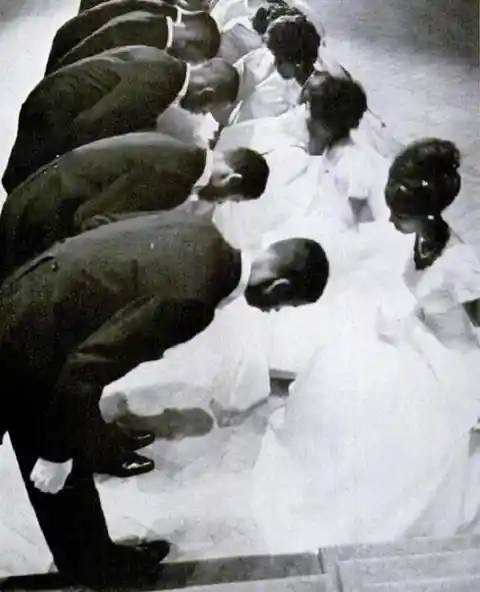
This rare photo shows a debutante ball held in Harlem in 1950. The sad story behind it is that, at that time, black people were separated from white people and were not allowed to mix. This is why there were only black people at this ball.
The Allies Win The War
We all know that the Allies won World War II, but it is interesting to see how it actually happened. The long, bloody war came to an end in 1945.
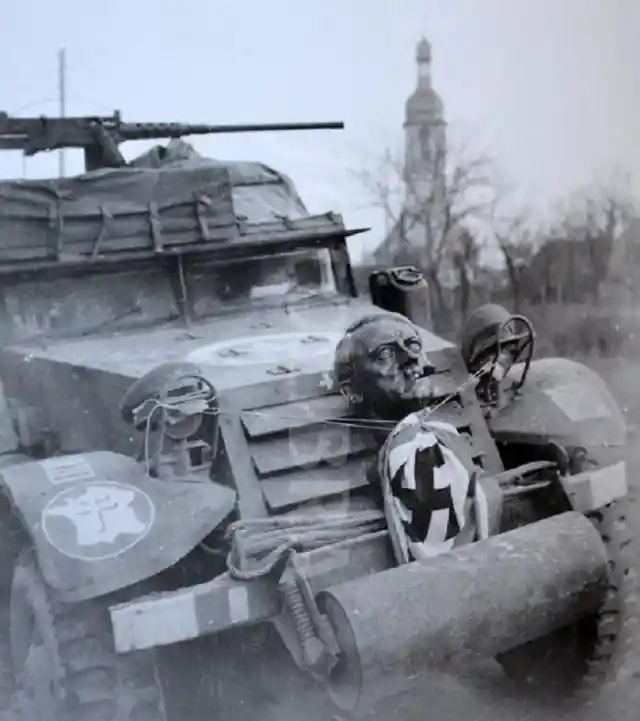

This picture was taken near the end of the war and it shows an Ally half-track decorated with the head of a Hitler statue to humiliate the Nazis.
Abandoned Viking Tunnel
The Vikings were an incredibly advanced group of people. They revolutionized sailing and fighting, and it is believed that they reached the Americas before anyone else did.
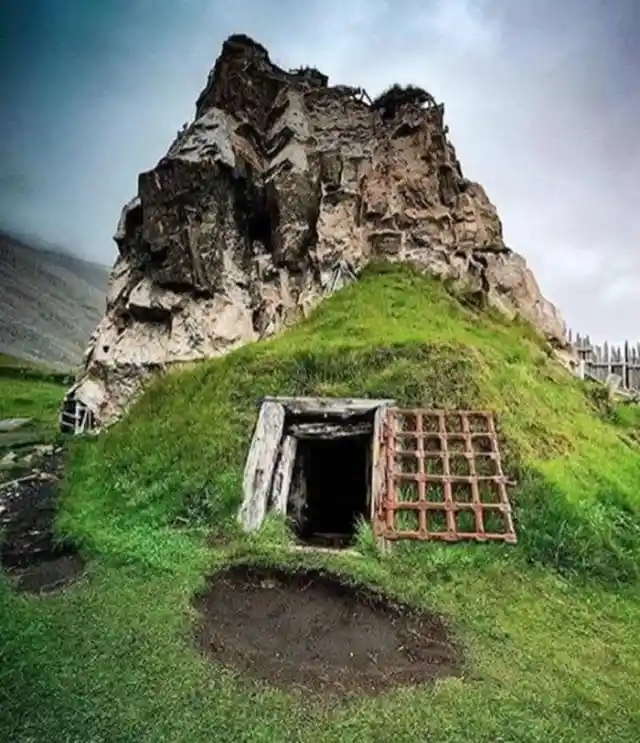
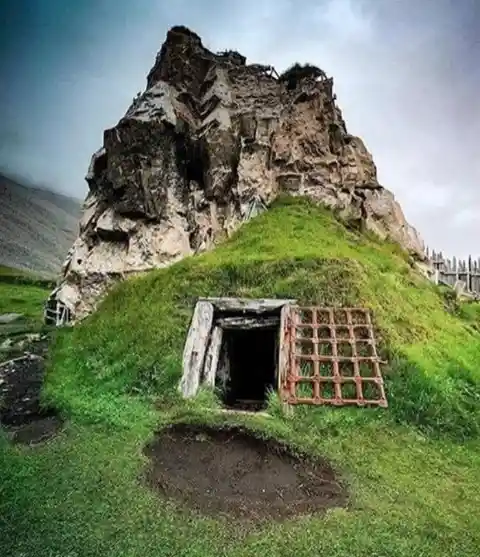
Not much is known about this tunnel, located in Höfn, Iceland, but what we do know is that the Vikings built it. There are many more scattered all around Europe.
Abraham Lincoln & His Son
Abraham Lincoln had four sons, but it is believed that his favorite one was the youngest, Thomas "Tad" Lincoln III.
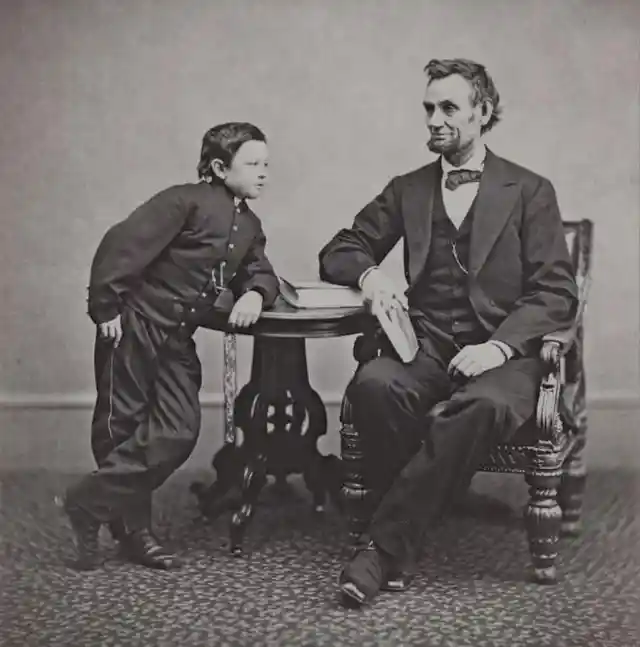
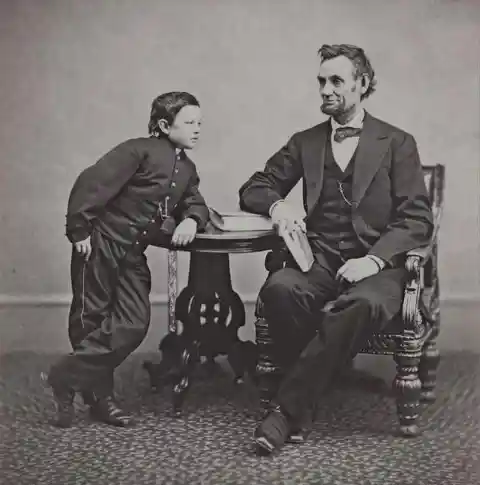
The little guy was allowed to run around the White House and would often interrupt his father's meetings. When Lincoln was assassinated, Tad took it the hardest.
Consequences Of War
Nick Ut, Associated Press photographer, was on the outskirts of Trang Bang when the South Vietnamese air force accidentally bombed a village. Nick captured a group of kids running away from the explosion.
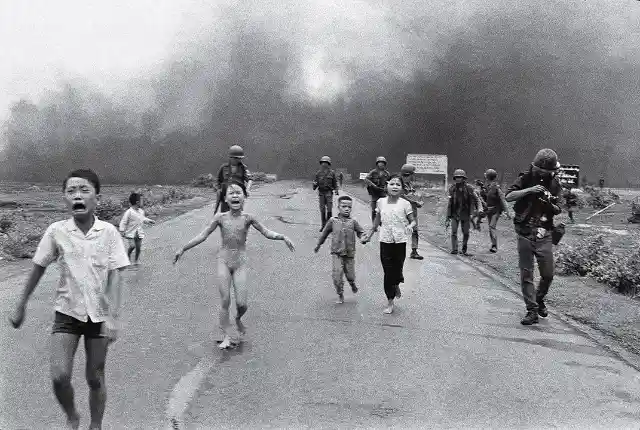
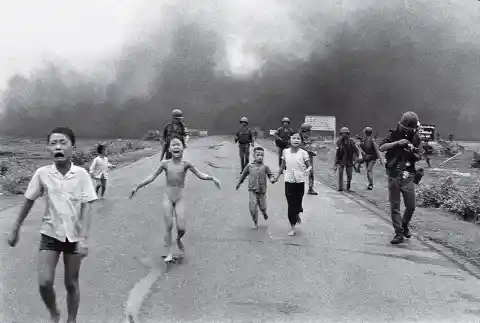
There was a naked girl among those kids. The little girl had third-degree burns on 30% of her body and was told she wouldn’t survive. Nick’s reaction was quick, as he decided to take the girl to America, where she got treatment for her injuries.
The First Wonder Woman
Younger generations know Gal Gadot as Wonder Woman, but the original one was played by the one and only Lynda Carter, who became an icon at the time.
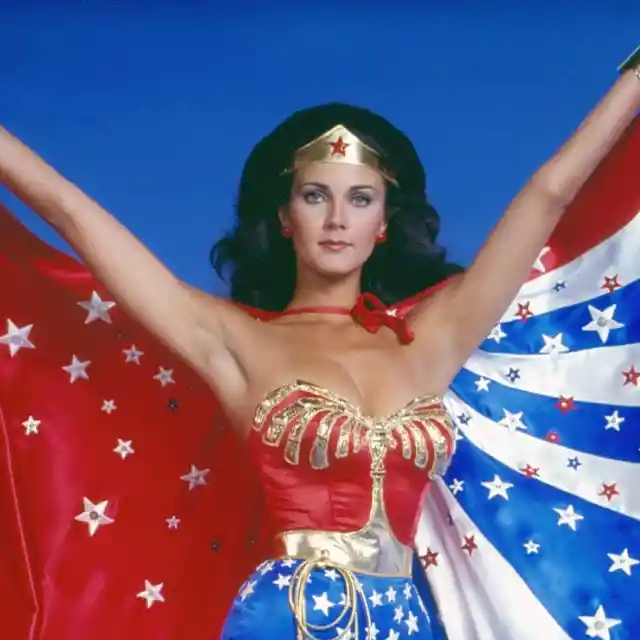

Sadly, the behind-the-scenes experience wasn't all that glamorous for Carter. She recently revealed that she suffered abuse at the hands of a producer during filming of the series and kept it secret this whole time.
Pillars Of Creation
This may look like a painting, but it is actually a photograph taken by the Hubble Space Telescope in 1995. The telescope captured the Eagle Nebula, a star-forming patch of space that is 6,500 light-years from us.
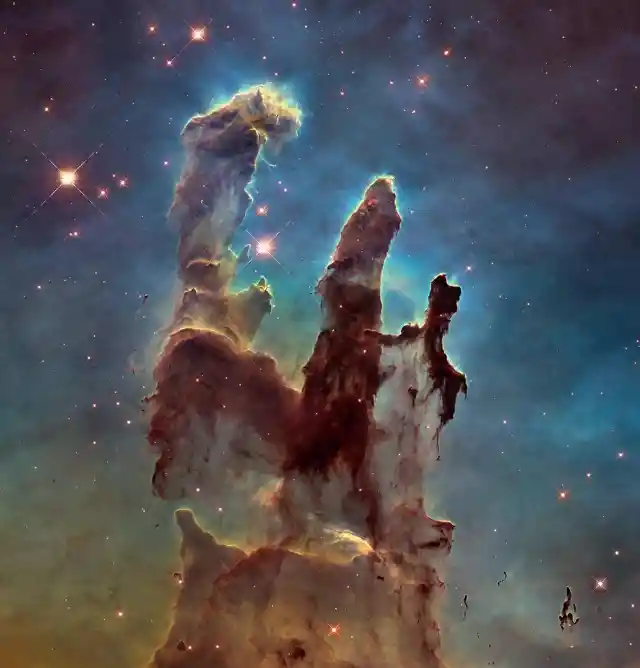
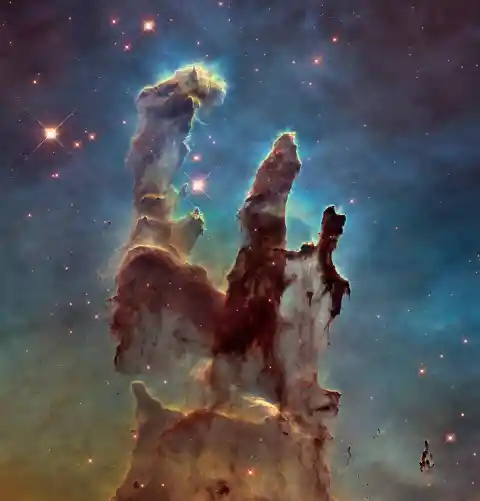
It is made up of clouds of interstellar dust shaped by winds blowing out from nearby stars. The black space on the top right is the magnification of the telescope’s cameras. This amazing photo is known as Pillars of Creation.
Molotov Man
Susan Meiselas was determined to capture every corner of Nicaragua. In 1979, Susan was a young photographer whose works illustrated the living conditions of the Nicaraguan people: extreme poverty and inequality.
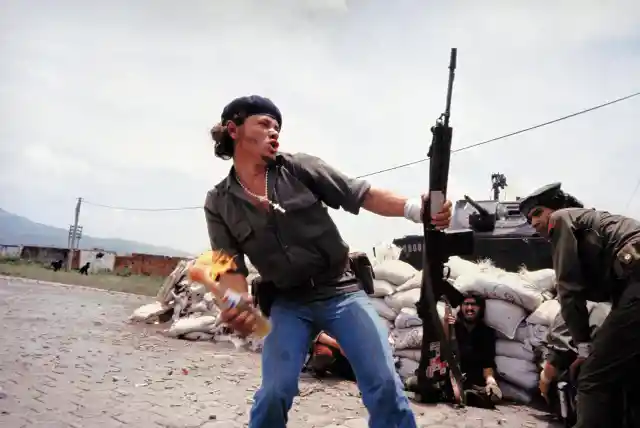
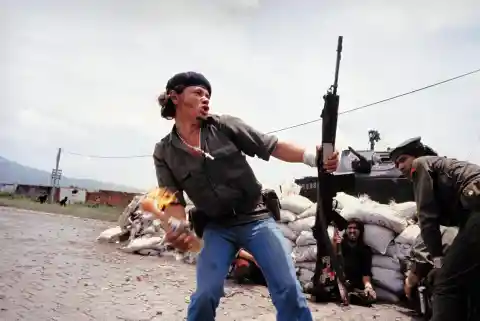
Susan visited loads of places and met revolutionaries from the Sandinista cause. The photo captured Pablo de Jesus “Bareta” Araúz using a Molotov cocktail against a national guard stronghold.
Falling Man
All photographs of 9/11 are heartbreaking to see, but this picture of a falling man is particularly horrifying. This is one of the very few photos that actually captured someone dying.
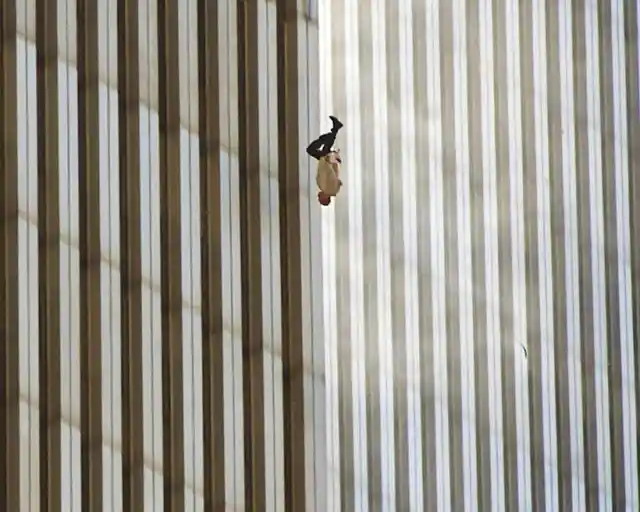
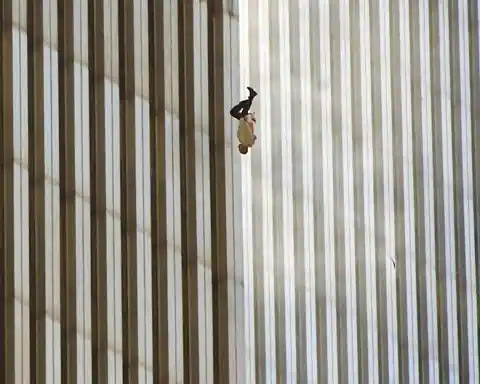
The picture was published by several newspapers just days after the attack, which sparked a backlash from readers. The man’s identity is still unknown.
Coffin Ban
Sometimes, it takes a very graphic image for people to understand what is actually going on in the world. It was no secret that 700 U.S. troops had been killed in Iraq by 2004, but it wasn’t until this photo of their bodies returning home was published that people took notice.
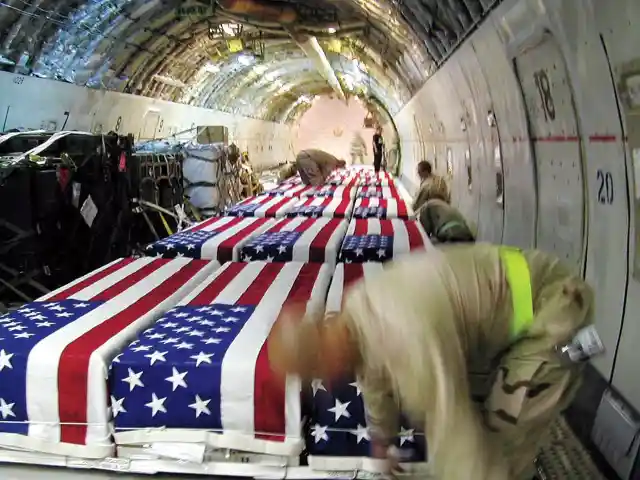

This photo also sparked a conversation about whether it is OK to take pictures of the deceased since they cannot consent to being photographed. The picture was banned for years until the Pentagon lifted the ban in 2009.
Iraqi Orphan
This photograph shows a little girl moments after becoming an orphan in Iraq in 2005. She was in her family’s car when her parents were shot dead by U.S. soldiers.
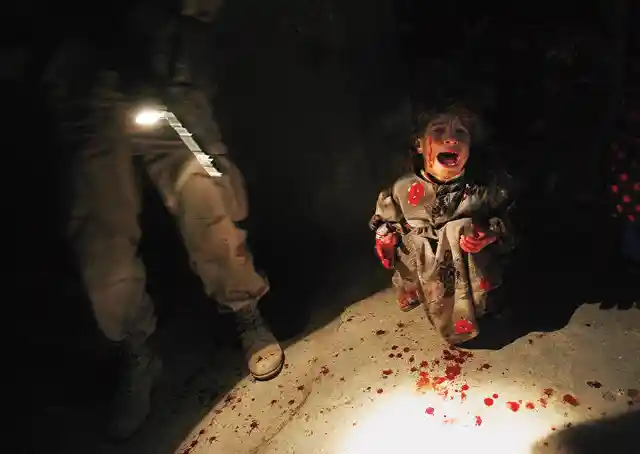

The soldiers suspected the car was carrying a suicide bomber, which was not the case. Thanks to this picture, soldiers were forced to revise their procedures to make sure they didn’t murder innocent people.
Gorilla in the Congo
Senkwekwe was a silverback mountain gorilla that lived in Virunga National Park in the Democratic Republic of Congo. He and other gorillas were shot dead during a violent conflict that engulfed the park.

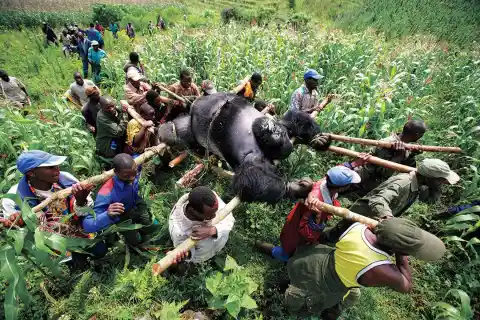
Residents and park rangers can be seen respectfully carrying his body out of the forest, which reminded many people of the body of a human. Senkwekwe was one of the many victims of the conflict in Central Africa.
The Situation Room
The Situation Room is a meeting place for sensitive information flowing into and out of the White House. This picture is arguably the most famous ever taken in this room because it captured a pivotal moment in American history.

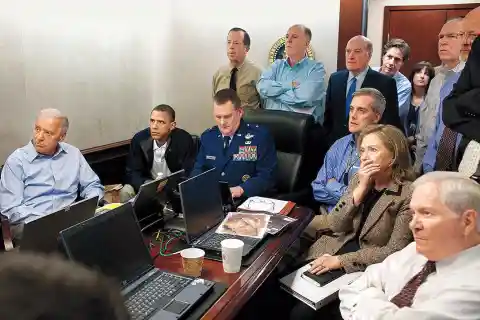
Photographer Peter Souza took this photo of President Barack Obama and his team as they watched U.S. forces raid Osama Bin Laden’s compound in Pakistan and killed him.
Mao Zedong
The former leader of the Chinese Communist Party was 72 years old when this picture was taken. He decided to take a swim in the Yangtze River to prove his age would not affect his health nor his power.
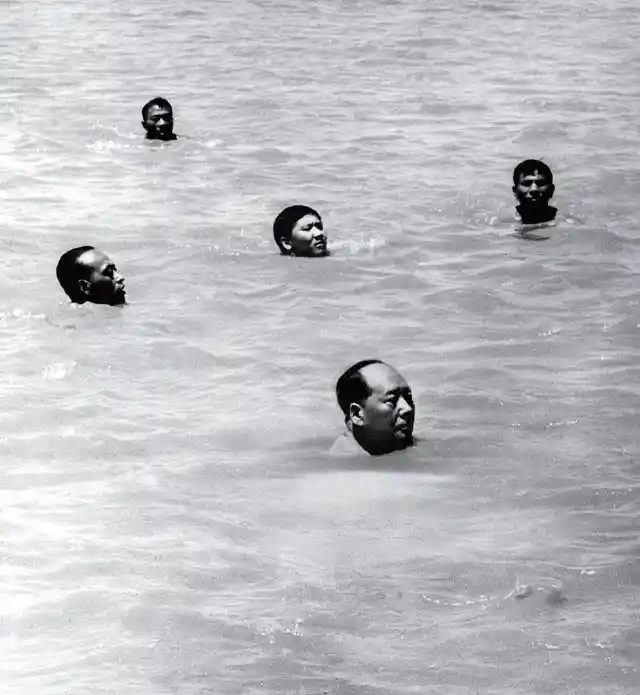
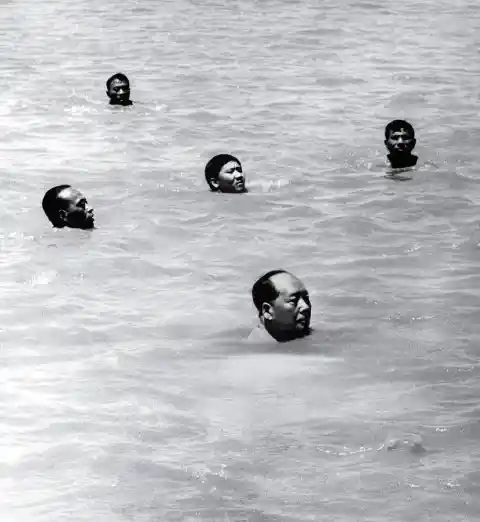
And the picture did the trick; Mao was more powerful than ever. He started the Great Proletarian Cultural Revolution, which lasted for a decade and left nothing but a million deaths.
North Korea
David Guttenfelder was chief photographer for the Associated Press in Asia when the organization became the first one to open a bureau in North Korea, a notoriously private country.


Guttenfelder went from taking photos of official events to capturing scenes of North Korea’s daily life, something that the rest of the world hadn’t seen before. He uploaded this picture to Instagram in 2013 with the caption: “The window [into] North Korea has opened another crack,” he wrote on his widely followed account. “Meanwhile, for Koreans here who will not have access to the same service, the window remains shut.”
Albino Kid
It was a long way towards independence for the nation of Biafra, an African nation that suffered catastrophic consequences while fighting for freedom. Don McCullin was a British photographer who captured those horrifying moments.

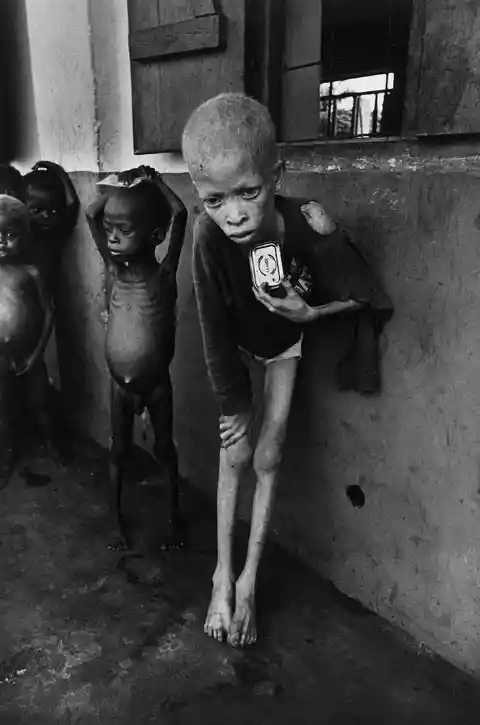
McCullin photographed a nine-year-old albino kid who was about to starve to death. After seeing pictures of starvation and diseases, the public became aware of such chaos, and governments quickly stood up.
Jewish Boy Surrenders in Warsaw
Here, a young Jewish boy can be seen raising his hands, surrendering to the Nazis who were occupying Warsaw at the time. He was one of the nearly half a million Jews who were packed into the Warsaw ghetto.
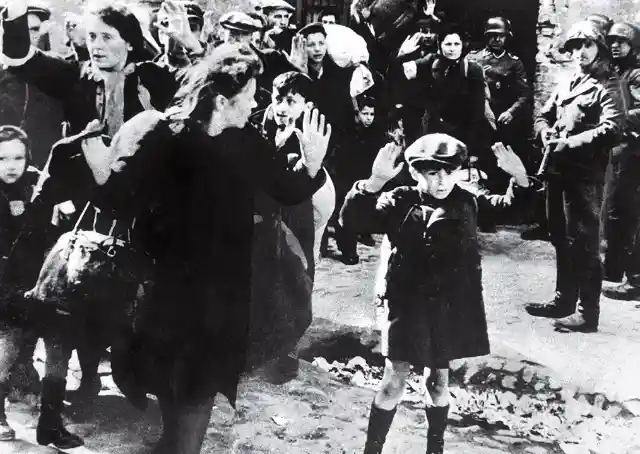

The Nazis began shipping an estimated 5,000 people to concentration camps in 1943. In this picture, we can see the boy surrendering before being taken by the Nazis.
Piss Christ
This picture seems to have lots of special effects, but in reality it doesn't. It’s a real crucifix sunk in a jar of pee, the actual photographer’s pee. As disgusting as it may seem, many people approved of this kind of art.

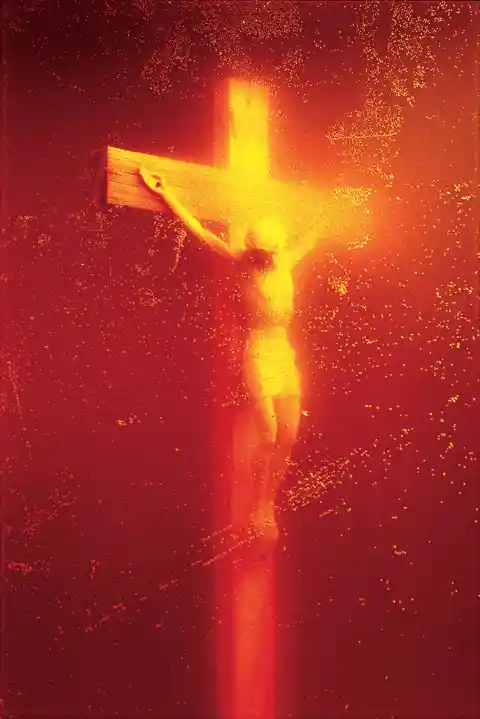
Andres Serrano was asked to maintain common standards in his photos. In fact, Congress passed an obscenity law because of his work. At the same time, he was considered an art pioneer.
The Critic
A photographer known as Weegee wanted to take a picture that showed the contrast between wealthy and working-class people in New York. In 1943, he convinced a drunk woman on the street to appear in his pictures, and she agreed.
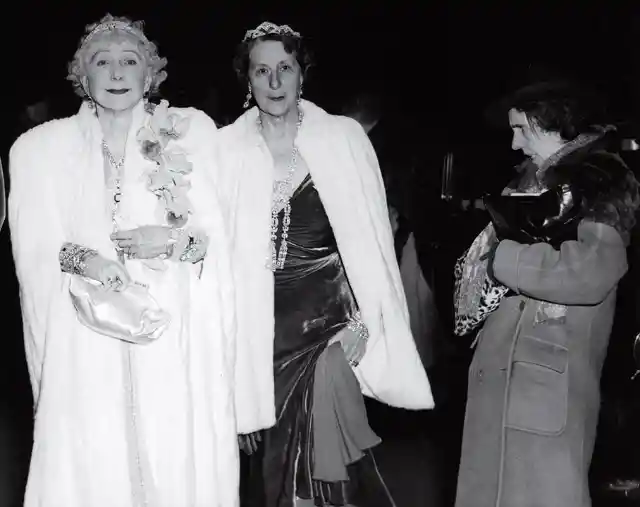
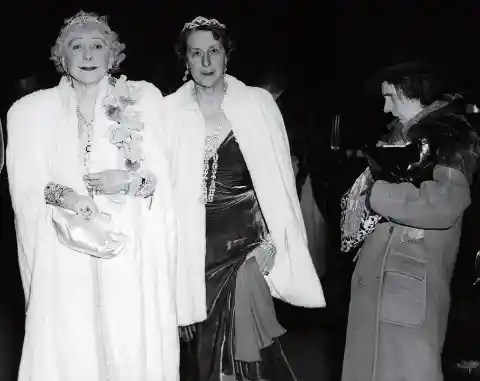
He then took her to the opera and captured the moment that the woman saw two wealthy women walking out of the building. The photo is known as The Critic and is one of the most famous photographs of the 20th century.
Execution
Iranian photographer Jahangir Razmi captured an execution that took place under the Ayatullah Ruhollah Khomeini regime at Sanandaj Airport. The victims were guilty of being “counterrevolutionary.”
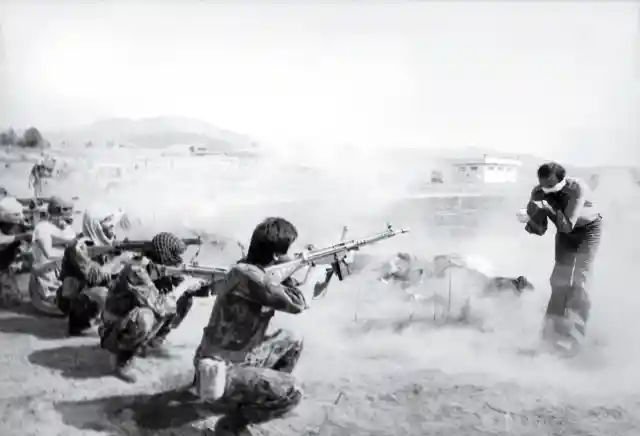

Razmi sent the picture to the Iranian newspaper Ettela’at. On the same day, Khomeini followers showed up at the newspaper offices to demand the name of the photographer. The photo appeared in every newspaper throughout the world days later.
D-Day
D-Day was the largest seaborne invasion in history, and it took place during World War II. The Allies landed in Normandy and began the liberation of France, which provided a foundation for their victory.


This photo captured Private First Class Huston Riley, who was struck several times by Nazi soldiers while he was in the water. He miraculously survived and slowly made his way to the shore.
Dalí Atomicus
Philippe Halsman’s work as a photographer consisted of capturing the essence of those he photographed. So when he had the opportunity to work with surrealist painter Salvador Dalí, he knew he had to make the picture look like one of his paintings.
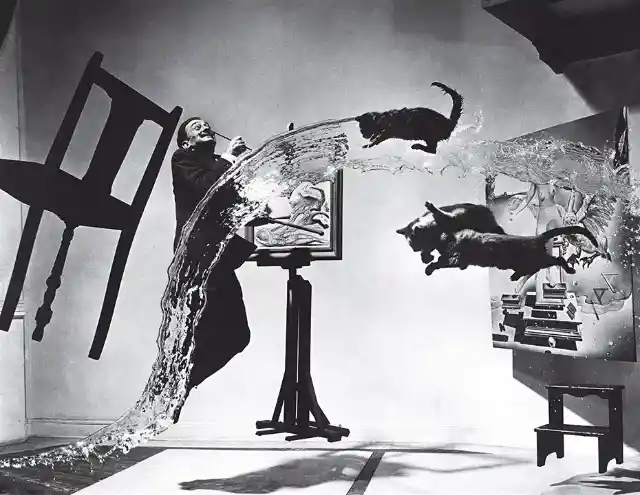
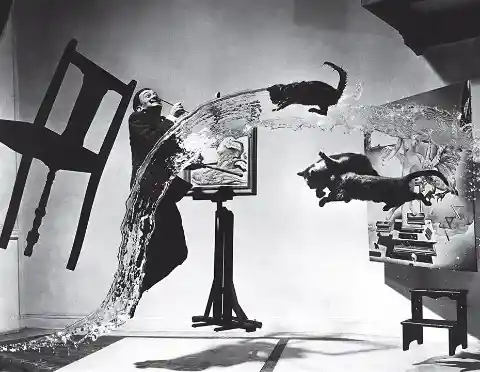
There was no such thing as Photoshop in 1948, so this was all done in real life. The chair and easel were suspended by wires and, on Halsman’s count, three cats and a bucket of water were thrown into the air as Dalí jumped.
Flag Raising on Iwo Jima
Iwo Jima is a minuscule island 760 miles south of Tokyo. This tiny piece of land was a critical part of the Allies’ plan to march toward Japan during WWII, so conquering this territory was crucial.
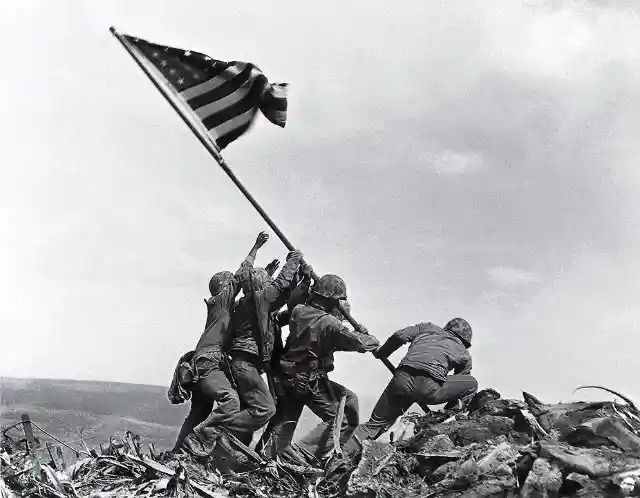
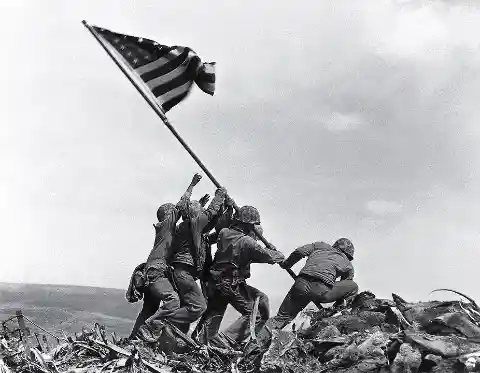
After five days of fighting, U.S. troops captured the island and raised an American flag to inspire the soldiers to keep going. This picture became a symbol of unity for the American people.
Honorable Allende
The first elected president of Chile was Salvador Allende. He made radical but democratic changes in the country. However, the economy didn’t help his administration, so the opposing party organized a coup.
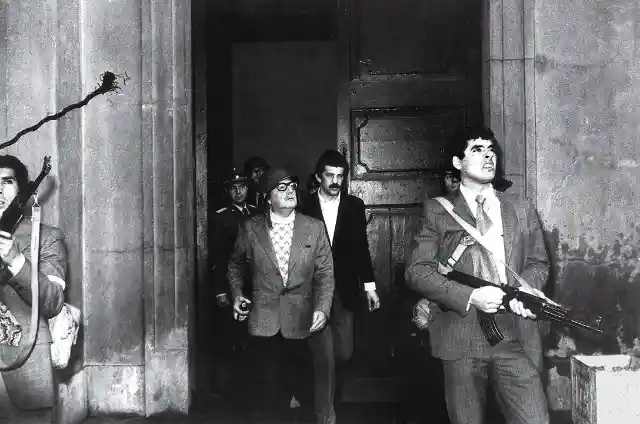
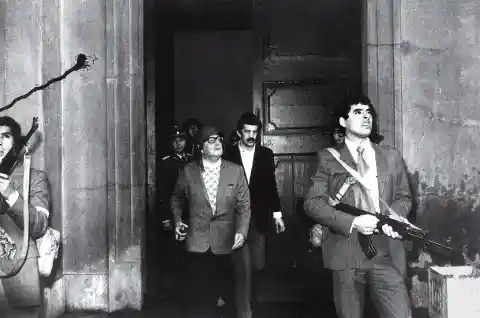
The picture was taken by Allende’s official photographer, Luis Orlando Lagos, right after he finished his final speech. Sadly, Salvador Allende committed suicide days later, and Lagos moved to another country to avoid being captured.
Raising a Flag over the Reichstag
After years of fighting, Soviet soldiers finally managed to conquer the German capital and raise a massive Soviet flag over the Reichstag, Germany’s parliament.

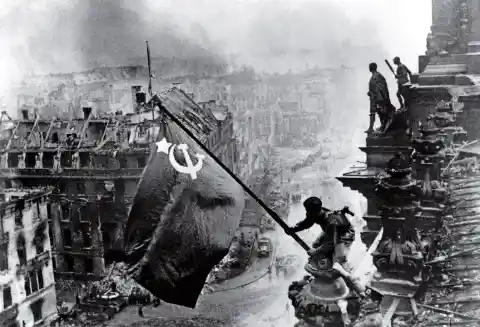
This picture showed the defeat of the Nazis and the end of the war. It became instant propaganda in Russia, to no one’s surprise.
Mushroom Cloud Over Nagasaki
Although people often only remember the first atomic bomb attack on Japan by U.S. forces, it is important to note that there were two attacks, which were equally devastating.
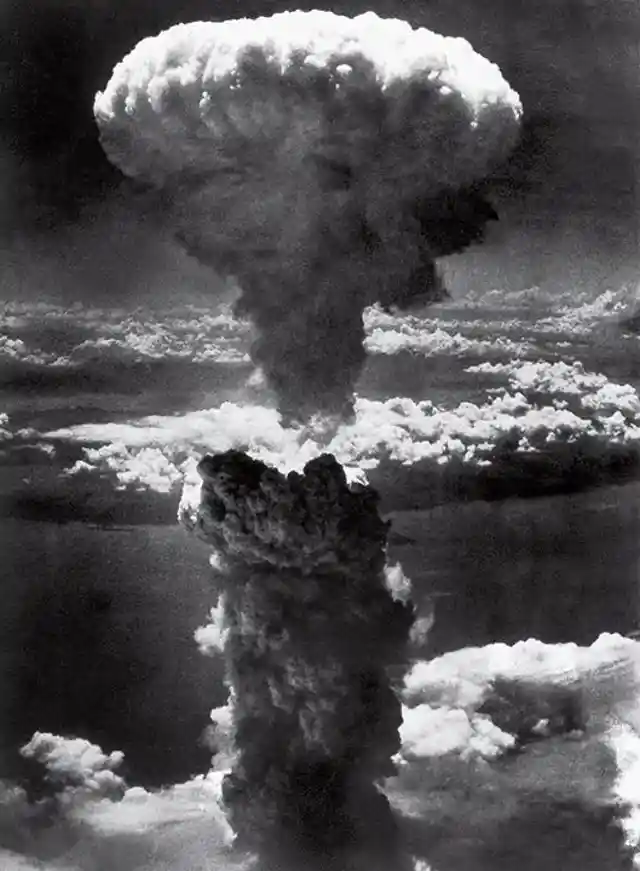
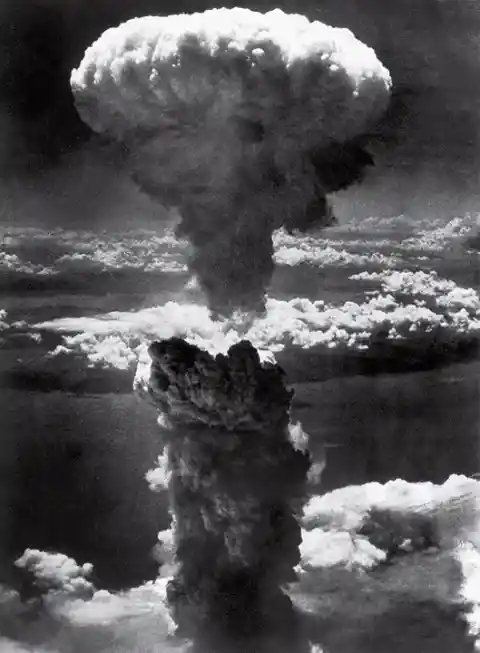
Just three days after the obliteration of Hiroshima, a second bomb was dropped on Nagasaki. This photo shows the explosion cloud caused by the bomb, which shot up a 45,000-foot-high column of radioactive debris and dust. 74,000 people were killed.
Garth And Lisa
This photo is not fake, it is actually a real-life situation. Garth and Lisa were photographed in the middle of a violent fight. Garth cornered and beat his wife in front of Donna Ferrato, a photographer.
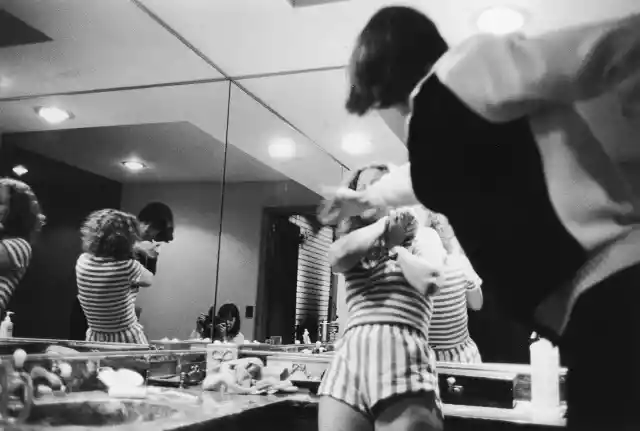
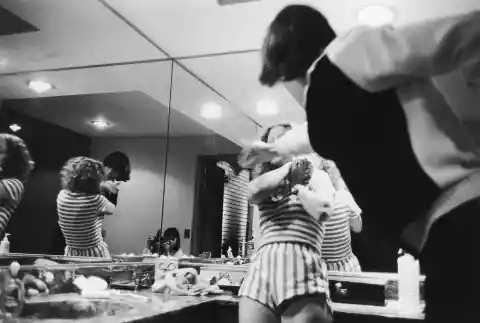
Donna published those pictures along with other photos of domestic violence episodes to bring these violent acts to light. A couple of years later, the Violence Against Women Act was passed.
V-J Day in Times Square
You’ve probably seen this picture a million times. This photo showed people celebrating the end of WWII on the streets of New York, with a young couple kissing.
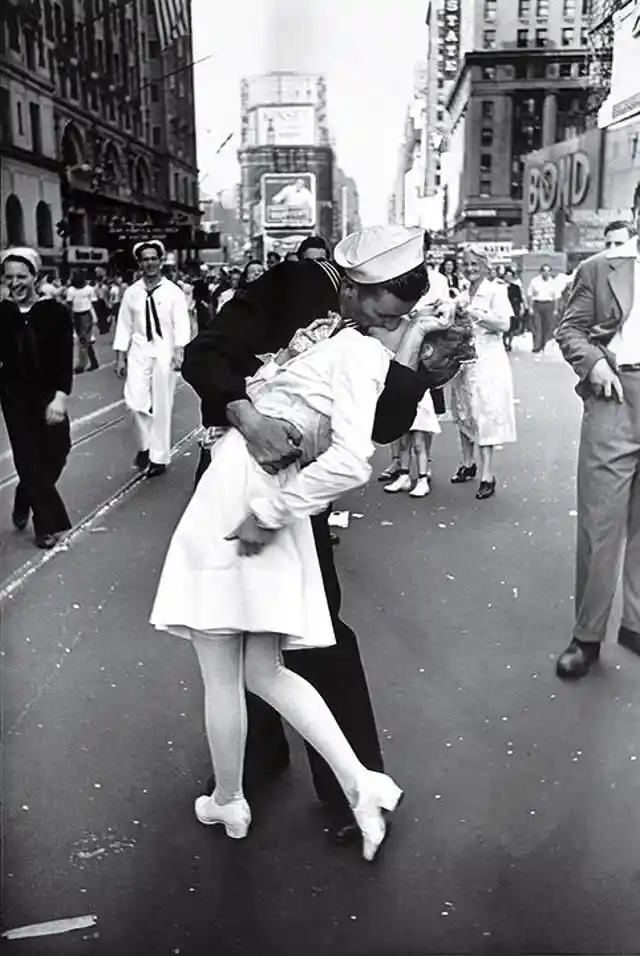

Although the picture became somewhat of a romance icon, the man and woman didn’t know each other. The sailor grabbed hold of a random woman and forced her into a kiss she did not want to partake in.
Refugees Boat
In 1977, the condition of South Vietnamese refugees was alarming. They were constantly transferred from one place to another. Yes, they were safe, but they were suffering.
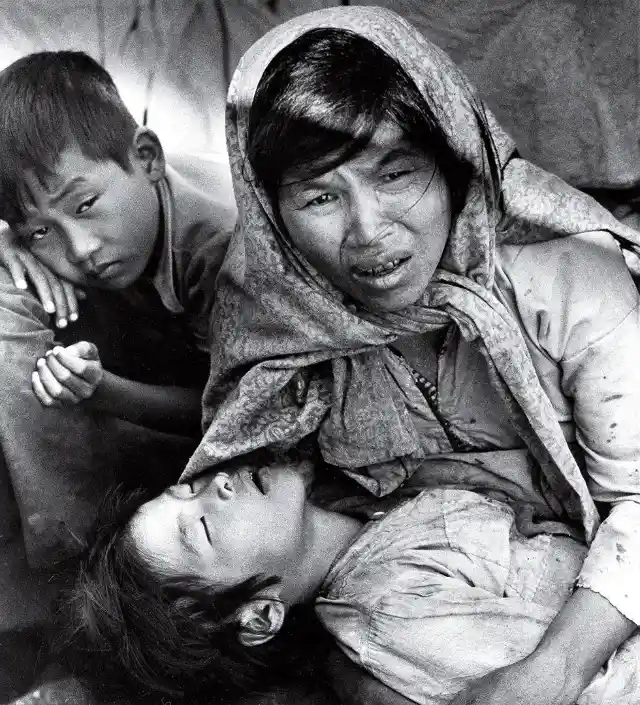

Eddie Adams was documenting a group of refugees who were moved to Thailand in a fishing boat. The picture was later presented to Congress, which decided to allow Vietnamese refugees to enter the U.S.
Gandhi and the Spinning Wheel
Mohandas Gandhi was held prisoner by the British at Yeravda prison in Pune, India, from 1932 to 1933. During this time, Gandhi had a spinning wheel at his disposal. With it, he made his own thread and inspired Indians to do the same.

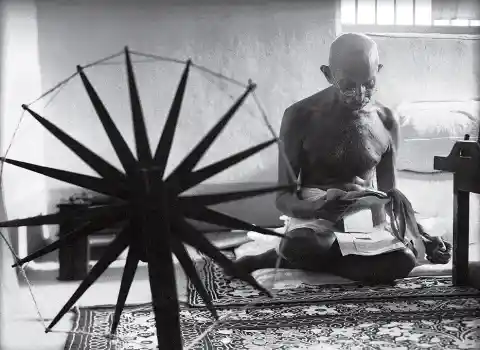
Gandhi’s followers started to also use a spinning wheel to make their own clothes instead of buying British goods as a sign of protest in their fight for independence. This helped solidify Gandhi as a man of peace who never used violence to make a stand.
Che Guevara
The most famous picture of Che Guevara, Guerillero Heroico, was taken one day after the bombing of a Havana Harbor ship. The entire crew died in the explosion, so a funeral was organized by Guevara and his followers the following day.

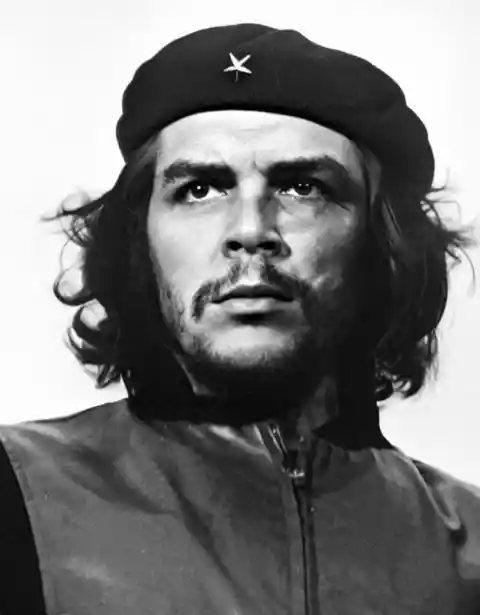
Alberto Koda was responsible for covering the event where Guevara delivered a speech in which he held the U.S. accountable for the bombing. The photograph became a symbol of the revolution only after Guevara’s death.
Nuit de Noël (Happy Club)
The work of Malick Sidibè illustrates the transition of Mali from a colony into a federation. The Malian photographer, aka Eye of Bamako, was capable of capturing the nation’s transition towards independence.

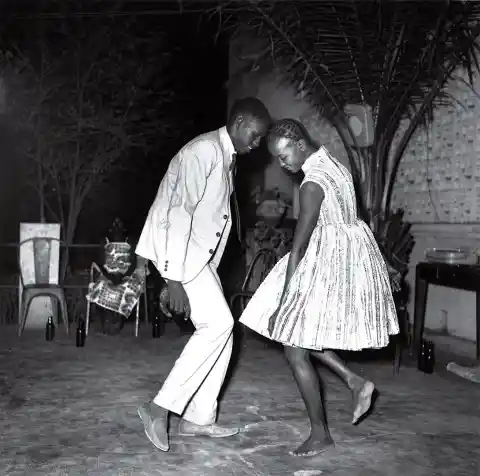
The photo of a couple hitting the dance floor represents free will, as young men were not allowed to be near young women, let alone touch them. Malick firmly believed music unchained Malians.
The Babe Bows Out
Babe Ruth was the greatest baseball player in history. By 1948, he had already spent a decade out of the game and was fighting terminal cancer.


So, when he stood in front of a huge crowd on June 13, 1948, people knew this was his final public goodbye. This bittersweet moment was immortalized in this picture.
The Shooting At Kent State University
Back in 1970, there was a group of students protesting against U.S. troops that were present in Cambodia. They started a shooting that lasted 13 seconds and left four dead students, and many others were injured.

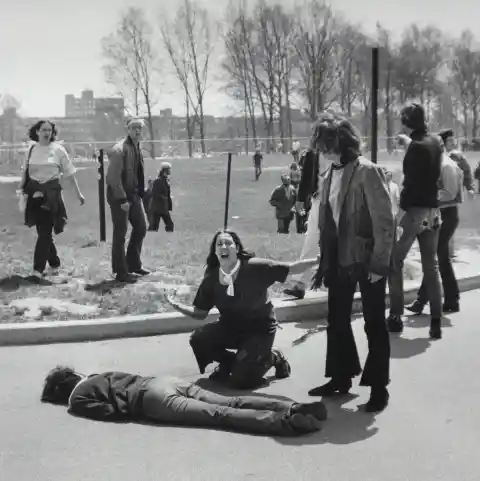
John Paul Filo was a student working as a part-time photographer who was present at this tragic event. He photographed student Mary Ann Vecchio crying over Jeffrey Miller’s dead body.
Country Doctor
Country Doctor was a photo essay by W. Eugene Smith, a photographer who loved to follow and capture people’s lives. In this piece of work, he followed Dr. Ernest Ceriani for 23 days as he worked as a country doctor in Colorado in 1948.
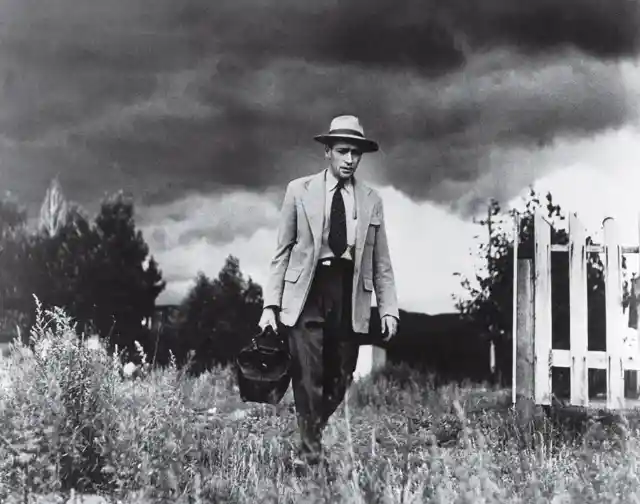
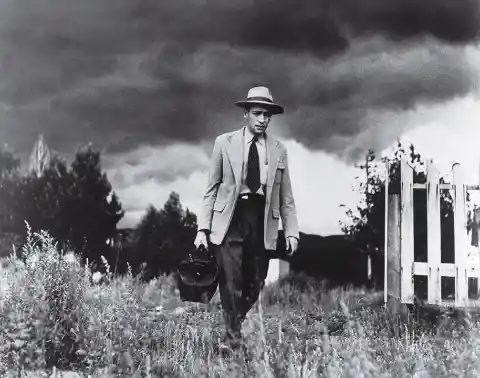
He was with Ceriani while he developed his own x-rays, treated a man with a heart attack, and called a priest to give last rites. This intimate glimpse of this doctor’s life became one of the most influential photo essays in history.
Camelot
Before John F. Kennedy became president, he was introduced to America by photographer Hy Peskin. Kennedy’s father, Joseph, believed it would help his son’s career to have him featured in LIFE magazine.
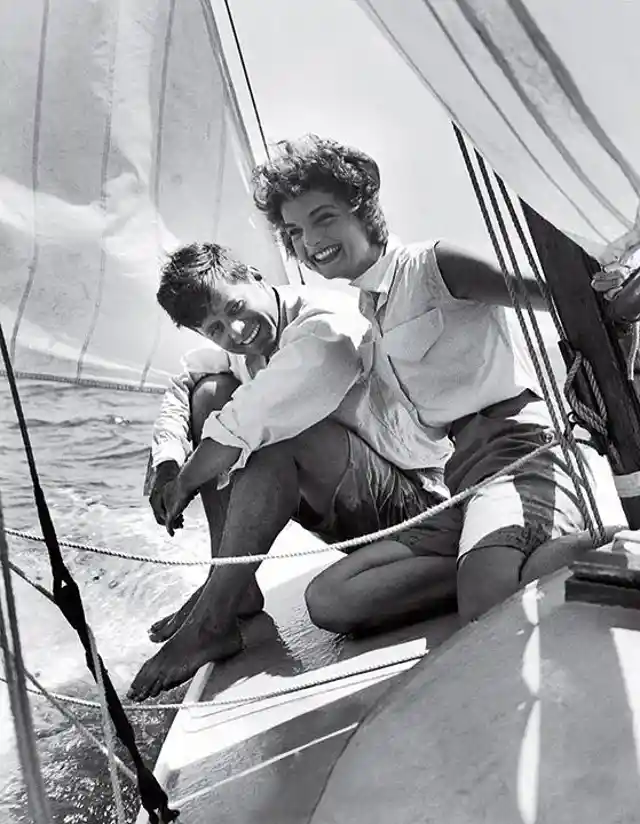
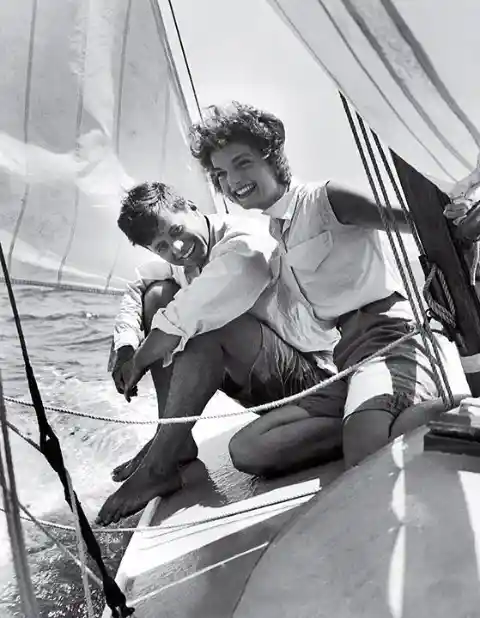
And so, this picture was taken. It showed Kennedy and his beautiful girlfriend, Jackie, smiling while on a boat. This made people fall in love with what seemed to be the perfect couple and greatly helped Kennedy’s political career.
The Pillow Fight
Harry Benson was probably the only human being in 1964 who wasn’t interested in The Beatles. The photographer considered himself to be a serious journalist, so he first refused to photograph the famous rock band.
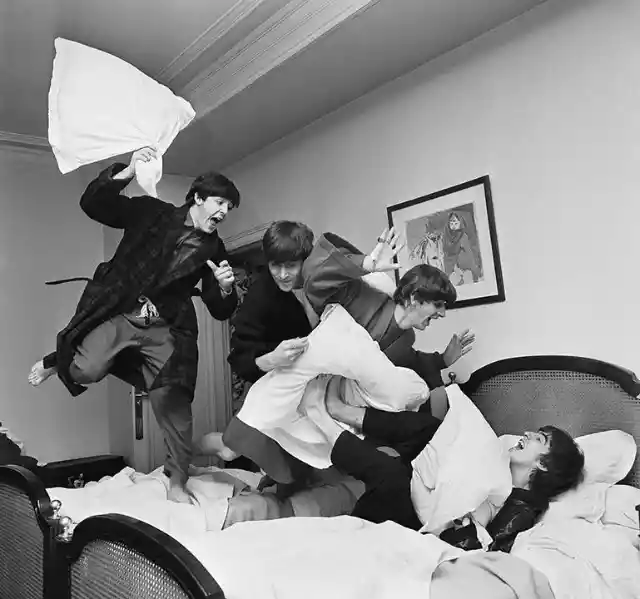
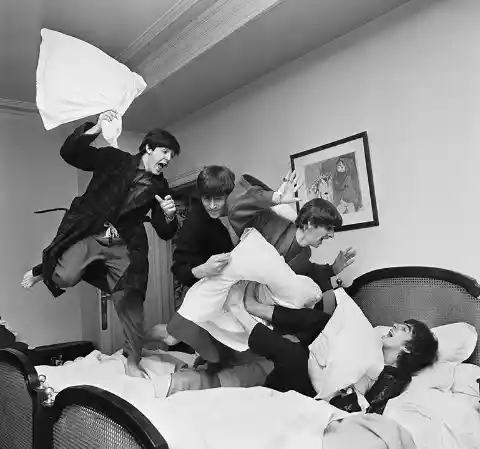
Of course, he regretted it the second he met the Fab Four. His work, The Pillow Fight, was taken on the same day I Want to Hold Your Hand hit No. 1 in the U.S. Benson was fortunate to photograph the band on several occasions after being famous for his first work.
Trolley—New Orleans
Trolley—New Orleans is a photo taken by Robert Frank in 1955 as part of The Americans, a book depicting Americans in their day-to-day lives. This image in particular caught people’s attention.
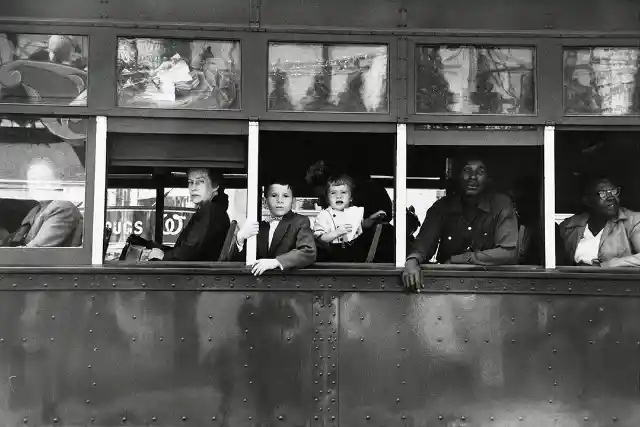
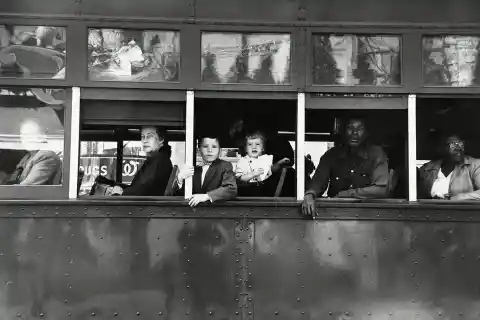
It shows the political tension of the time quite clearly, as the black people are segregated from the white people on the trolley. At the time, the book was labeled as “anti-American” and widely criticized.
Tank Man
Jeff Widener thought he would witness a murder when he saw a man standing alone in front of a line of tanks. The photographer captured the moment when Chinese troops displayed their tanks and a man stood up against them.
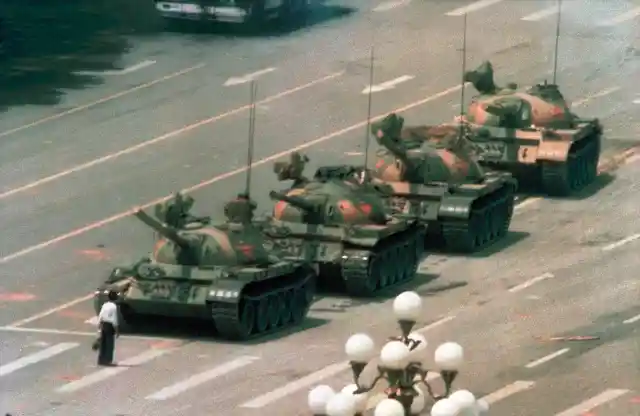

The photographer documented the brave man climbing one of the tanks. Fortunately, the troops held their fire and didn’t hurt the man, who was later called Tank Man. His identity is still unknown.
Dovima With Elephants
Dovima was an American model during the 1950s. In 1955, she was already one of the most famous models in the country, so it made sense for her to work with Richard Avedon, one of the most famous fashion photographers at the time.

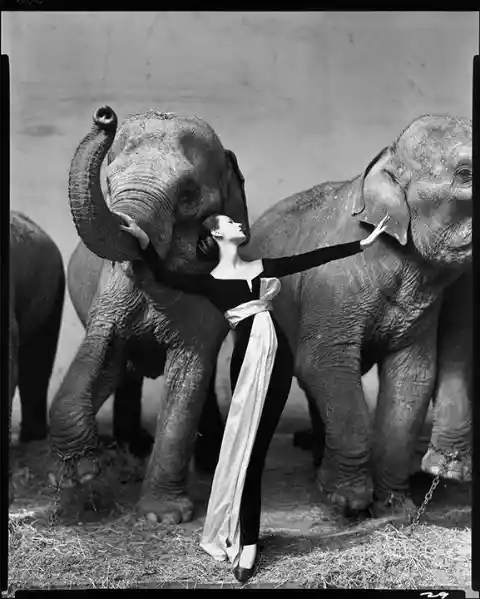
The two then created a photo that was as famous as they were. It depicted Dovima posing gracefully with two elephants while wearing Dior.
Prague Invasion
In 1968, Czechoslovakia was governed by Alexander Dubcek, who promoted several pro-human-rights reforms. Some feared that Dubcek would help introduce a democracy, so Warsaw Bloc forces set out to obliterate the movement.


Soon after Bloc’s tanks invaded Prague, large crowds of citizens fought back. The chaos was captured by photographer Josef Koudelka. Here, he took a photo of the exact time the conflict began.
Winston Churchill
This is arguably the most famous picture of Winston Churchill. It was taken during a crucial moment in WWII, when France, Poland, and large parts of Europe had fallen to the Nazis.

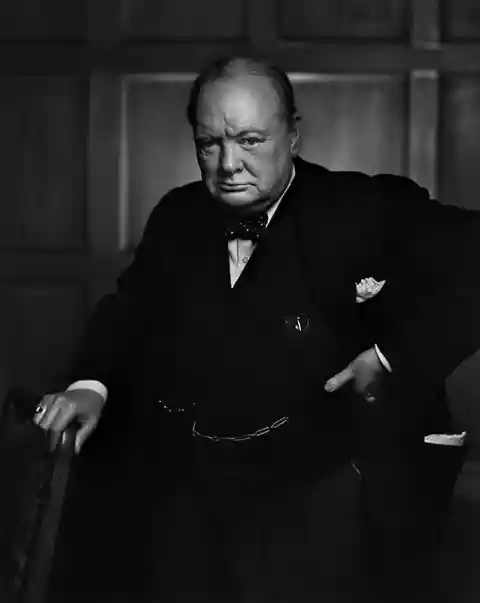
Churchill visited Canada to ask the Allies for help and was then surprised by Yousuf Karsh, a photographer tasked with taking his portrait. Churchill hesitantly agreed, but refused to put out his cigarette for the photo. Karsh then proceeded to pluck the cigarette out of his mouth and captured Churchill’s angry reaction at the right moment.
Revolutionary Software
Nancy Burson was a revolutionary back in 1982. She and a team of scientists found a way to age a person’s photograph. It was state-of-the-art technology, you could see how you would look in 30 years.


After years of hard work, photographer Burson and her team produced software that helped authorities in the search of children that went missing several years ago.
Lunch On A Skyscraper
This photograph shows the most famous lunch break ever captured: a group of workers casually eating, smoking, and chatting without a care in the world as if they weren’t 840 feet above ground sitting on a thin beam.
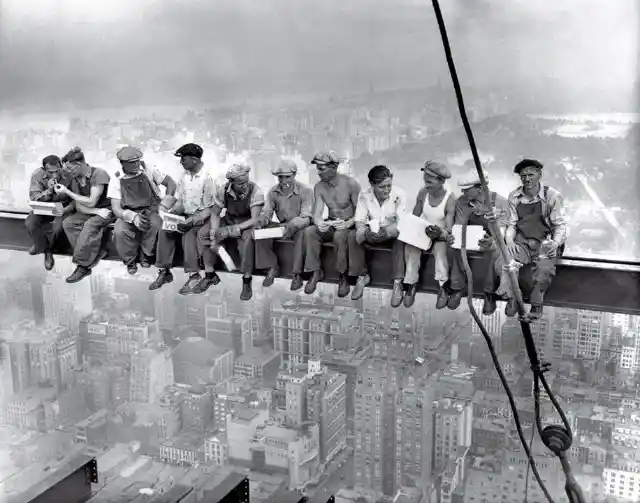

Contrary to popular belief, however, this picture was staged as part of a promotional campaign for the RCA Building in Manhattan. The identities of the photographer and the men are still unknown.
Leap Into Freedom
After World War II, around 2.5 million Germans escaped the Soviet Union to find freedom. A decade later, the German government placed a barrier made of barbed wire to stop Germans from running away.
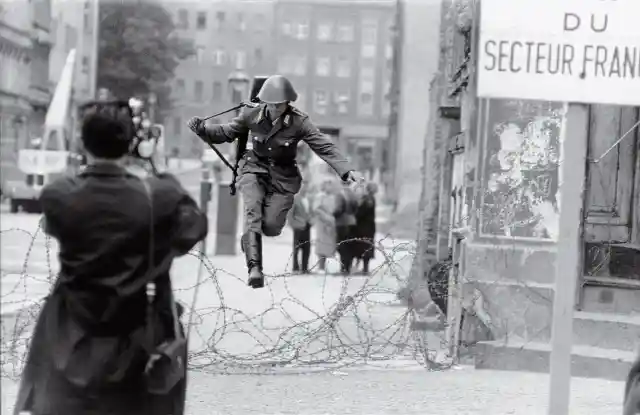

Peter Leibing and his colleagues, who were aware of the new barricade, captured the moment Hans Conrad Schumann jumped over the fence and vanished into thin air. Schumann is known as the first East German soldier to escape from the Soviet section, an act of freedom.
The Loch Ness Monster
Doctor Robert Wilson took a photo of the famous Loch Ness Monster in 1934 which became a huge sensation at the time. For years, people thought that Wilson had finally caught the legendary monster on camera.
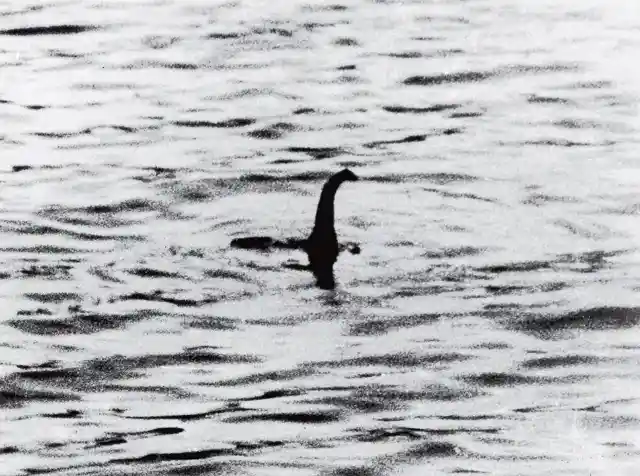
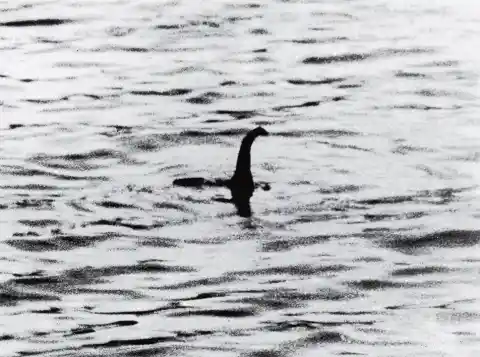
It was later revealed that it was all a hoax, and the “monster” was actually a toy submarine. Although the hoax was revealed, the legend of the Loch Ness Monster is still prevalent to this day.
Case Study House No. 22
The work of Julius Shulman had an impact on the way Californian society appreciated architecture. Back in 1960, Shulman photographed a house owned by an architect in Hollywood Hills.
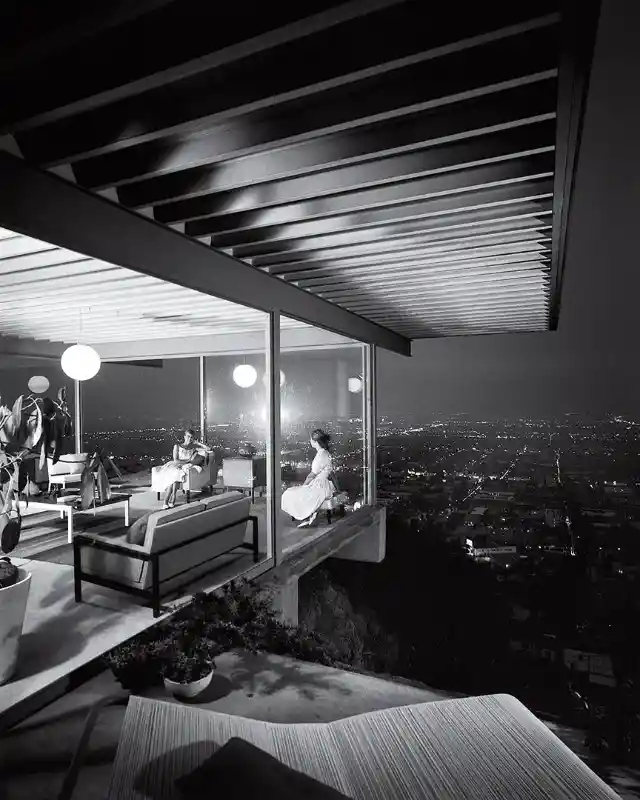

This dream home was part of the 36 Case Study Houses, the famous experiments in residential architecture. The Case Study House No. 22 took everyone’s breath away. The picture portrays modern architecture combined with a luxurious Californian way of life.